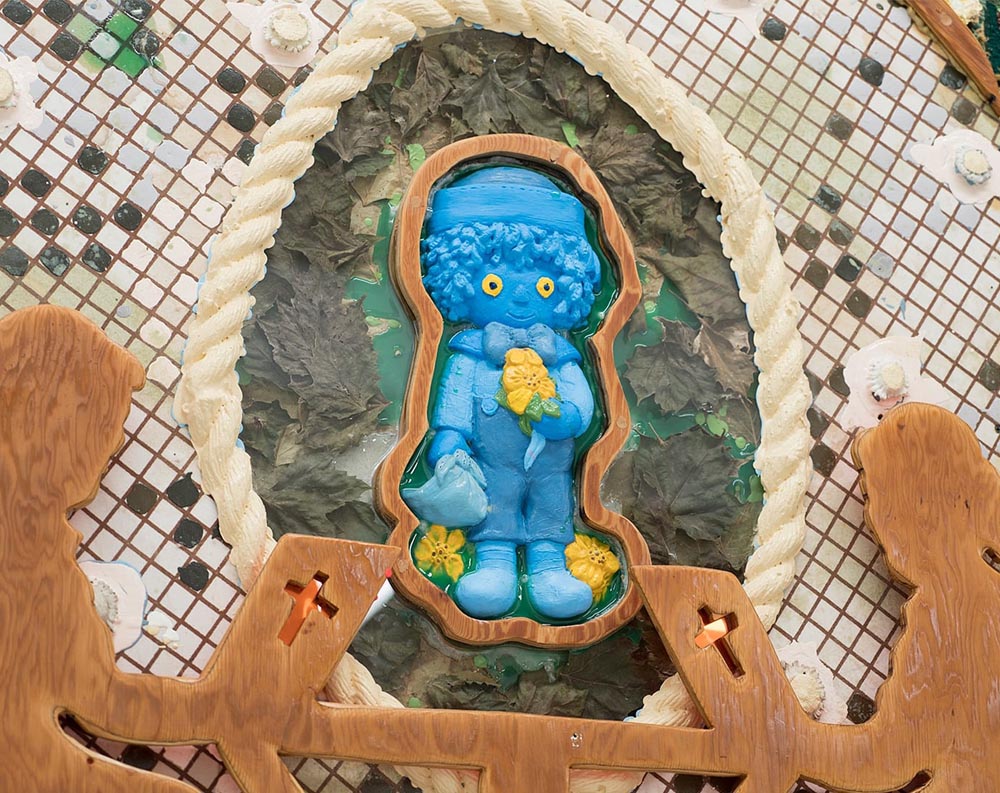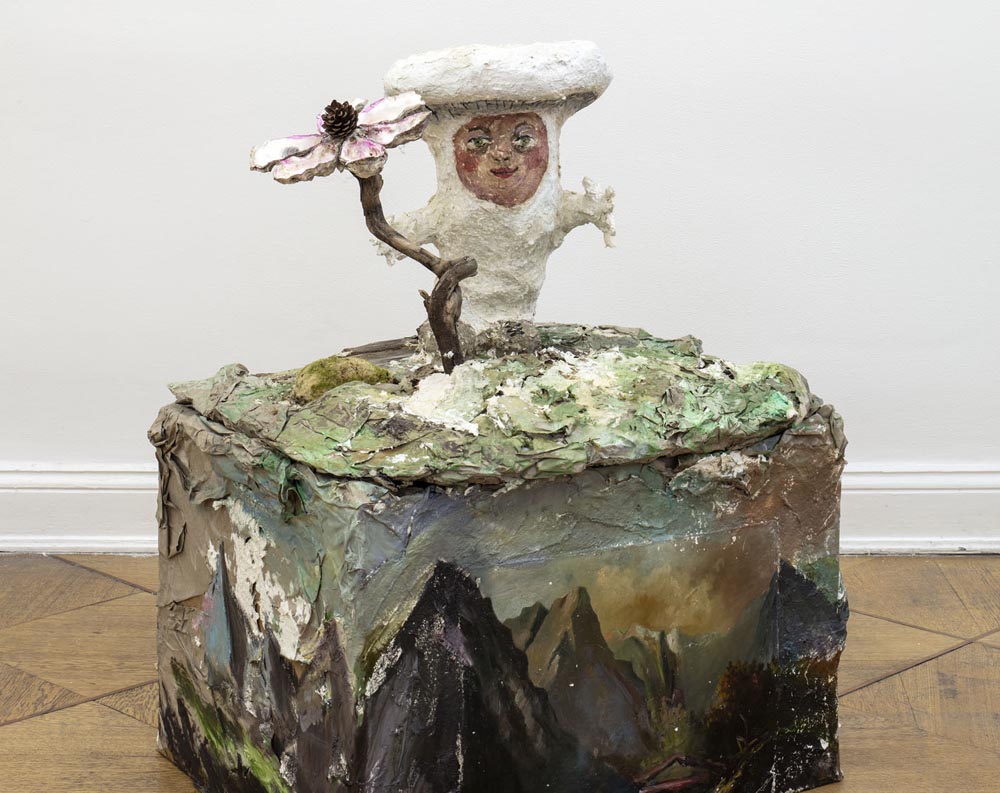OFLUXO
THE NAMELESS HEALER: HAZY WISDOM
Antonin Giroud-Delorme
at Les Limbes, Saint Etienne
July 31 – August 09, 2020
With a reading by Julie Sas
and an essay by Romain Noël
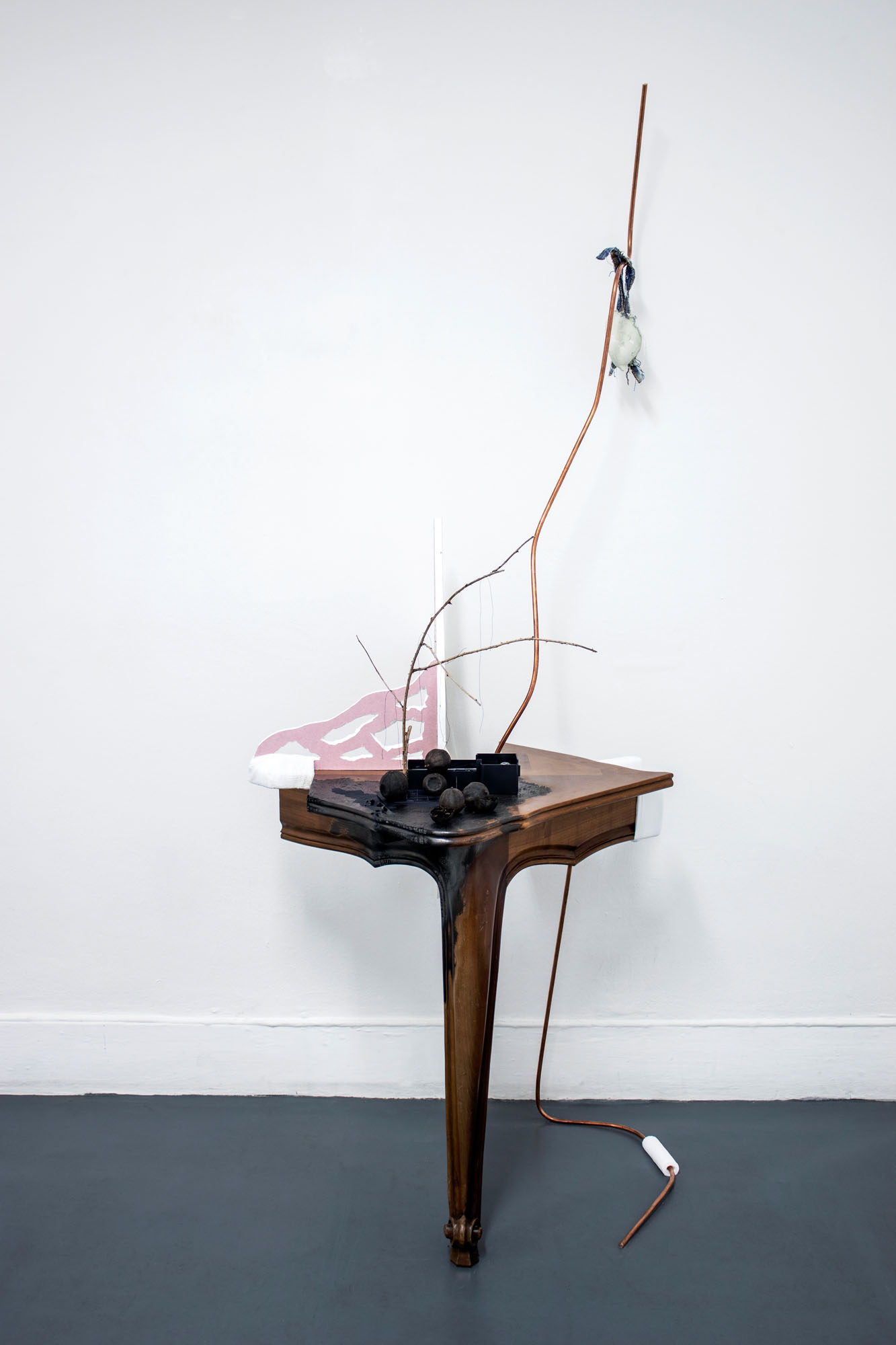
When Antonin Giroud-Delorme asked me for a text for the second part of The Nameless Healer, I immediately accepted, but on two conditions: I wanted to have carte blanche regarding the form my text would take, and above all I wanted to be allowed to sleep in situ, alone in the exhibition space, the night before the opening. Antonin closed his eyes for a few seconds (in another version, he could have raised his eyes to the sky) then he said yes, and hung up.
At the time, I was in the grip of what is called in the profession, “a lack of inspiration”. A breakdown that was not unrelated, it must be believed, with the heat of summer, the well-known demons of acedia and the movement of the stars (the was shining so brightly in the sky last month that I had a few headaches from it). But in reality this breakdown hid a much more worrying crisis that concerned all my ongoing research (I work on art in extinction times and I write poems), a crisis that itself hid another, even more vast one that concerned the entire cosmos, and that everyone knows or shortly will know about, since everyone is burning their wings and it’s not going to stop anytime soon.
In any case, I had taken the decision, during a seminar on “the rules of social science research”, to invent new ways of working. So I became obsessed with questions about methods of working. And for good reason, I was determined to find my way to the black forest of work. The day Antonin asked me for this text, I told myself that it would be the opportunity to put this obsession to good use. I told him that I had to sleep in the space itself, that this was how I worked, that this was my method, that I couldn’t do anything about it. And he accepted because he must have guessed that it was a fiction, that it could only be a fiction and that it was perhaps the best way to respond to his exhibition.
The method of sleeping in the exhibition space had, so to speak, imposed itself on me. It had indeed seemed to me that in order to better understand the nature of this hazy wisdom which was part of the exhibition’s title, I had to immerse myself in the place, even if it meant losing myself or disappearing forever. I was also nourishing the secret wish of crossing – in the reflection of a copper pipe for example – the inhuman gaze of the Nameless Healer. And above all, I always had the intuition that at night, the white cube would turn into a dark cube and I wanted to check this out once and for all.
The day before the opening , I landed in Saint-Etienne with the firm intention of writing my text during the night. It was a bit scary, to arrive like that, empty-handed, but it was my method and I stuck to it. Furthermore, it had been months since I had finished my texts at the last moment, in pain, in the middle of the night, so I wasn’t completely in unknown territory.
At the train station, someone was waiting for me with a sign on which my name had been written initially and then crossed out and rewritten in bigger letters. This person, whose identity I still don’t know, handed me a set of keys and a small piece of paper with the address of the place I was going to spend the night. Then they left and I found myself alone with the delightful impression of playing in a bad spy movie.
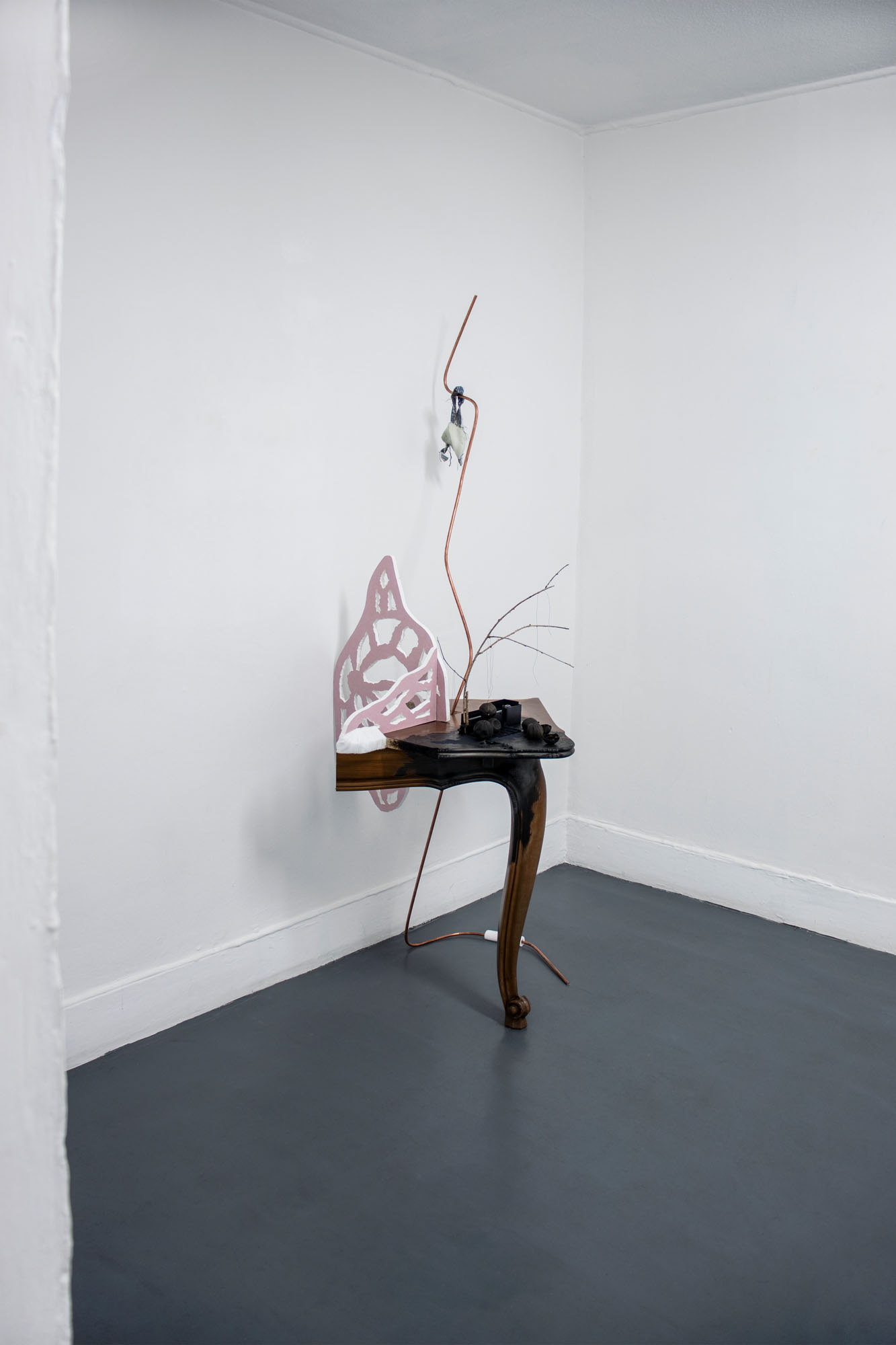
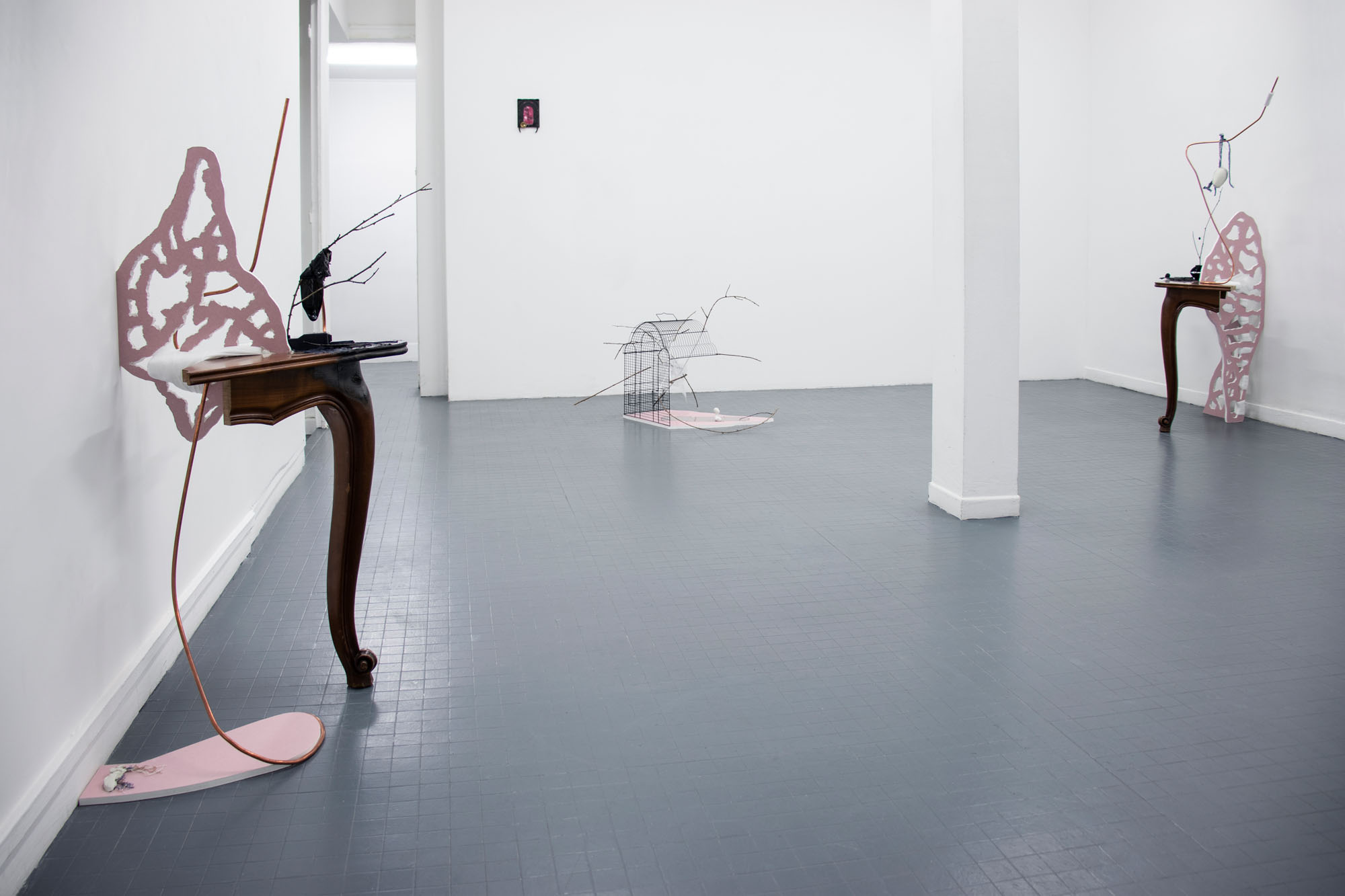
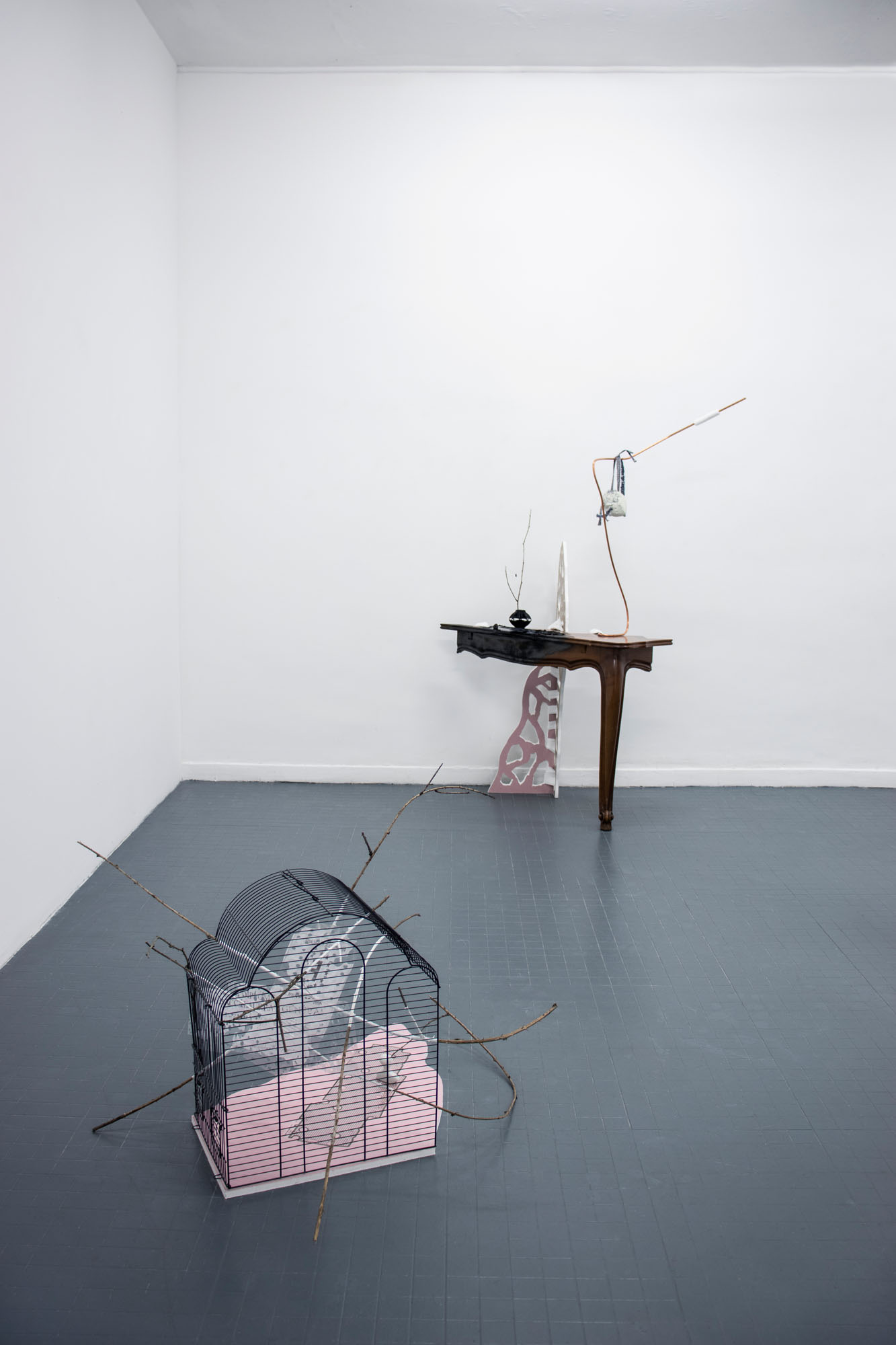
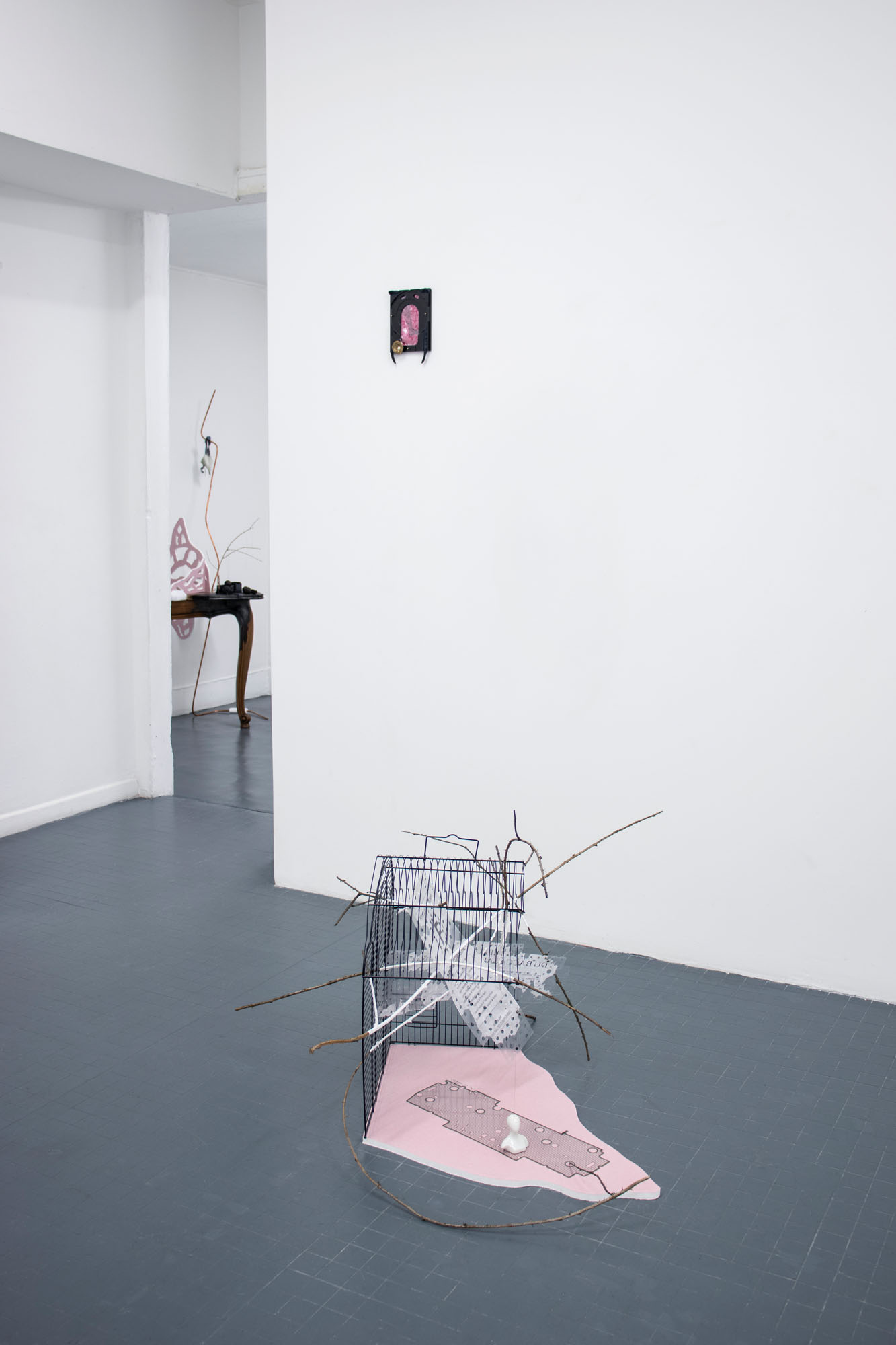
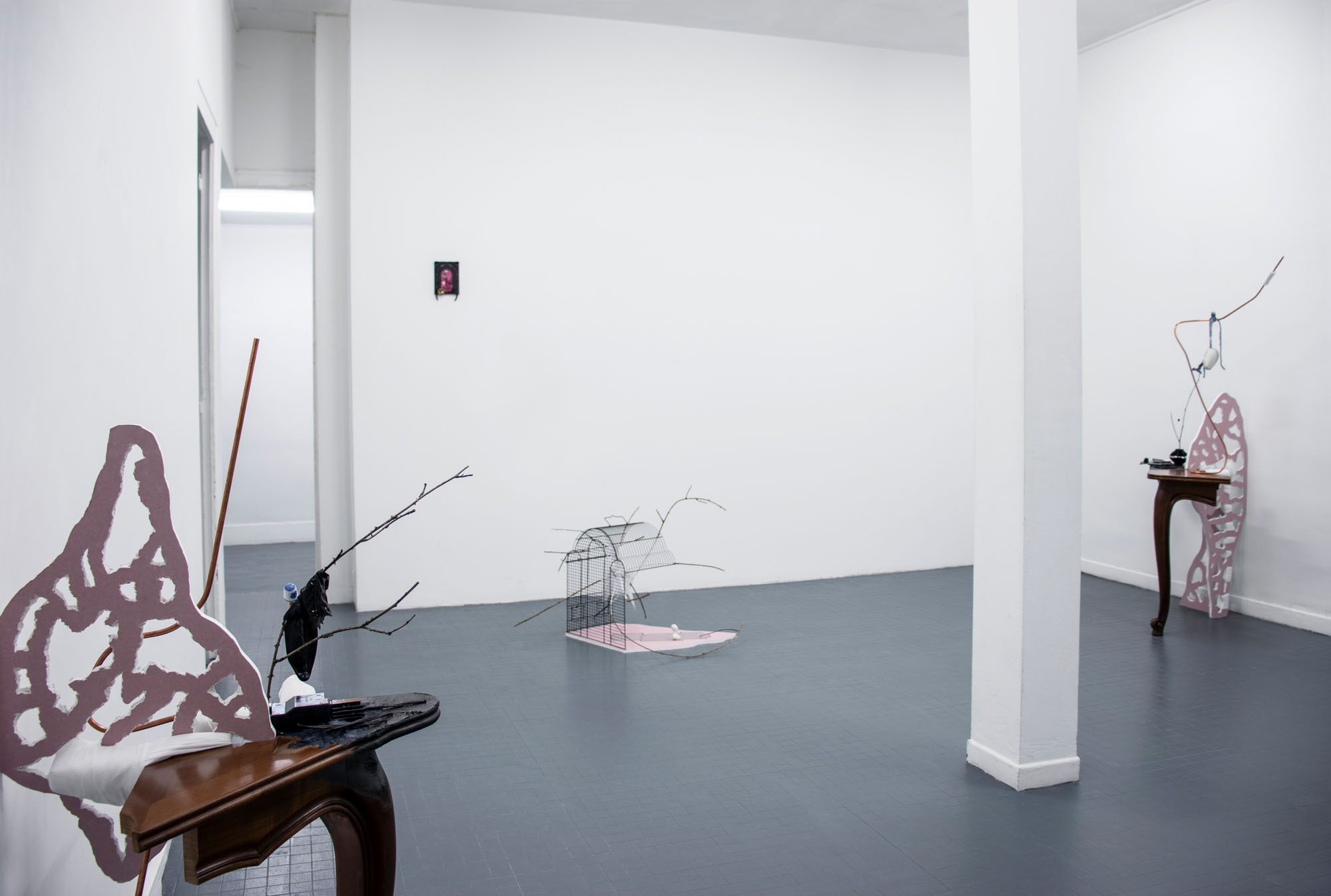
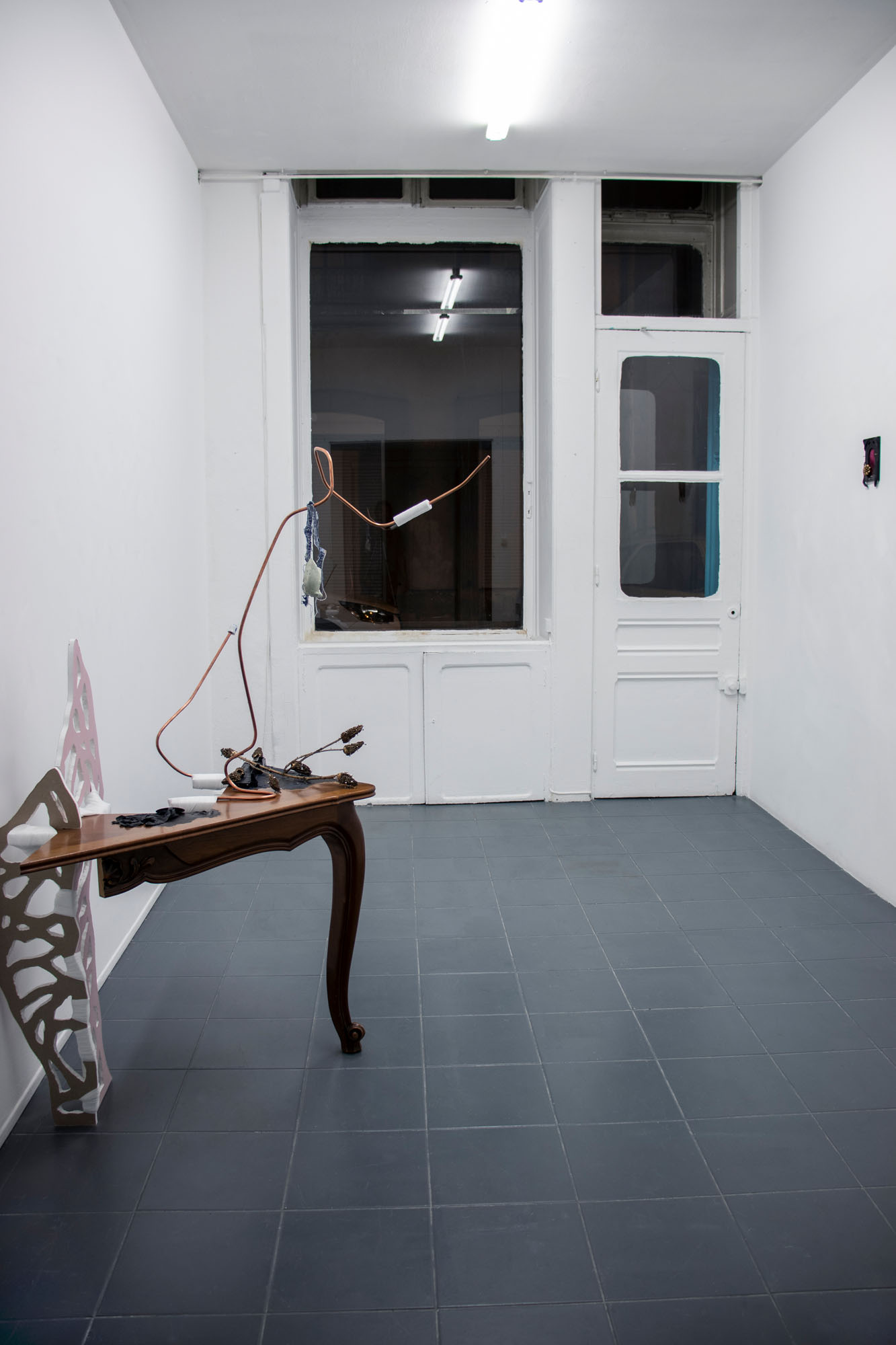
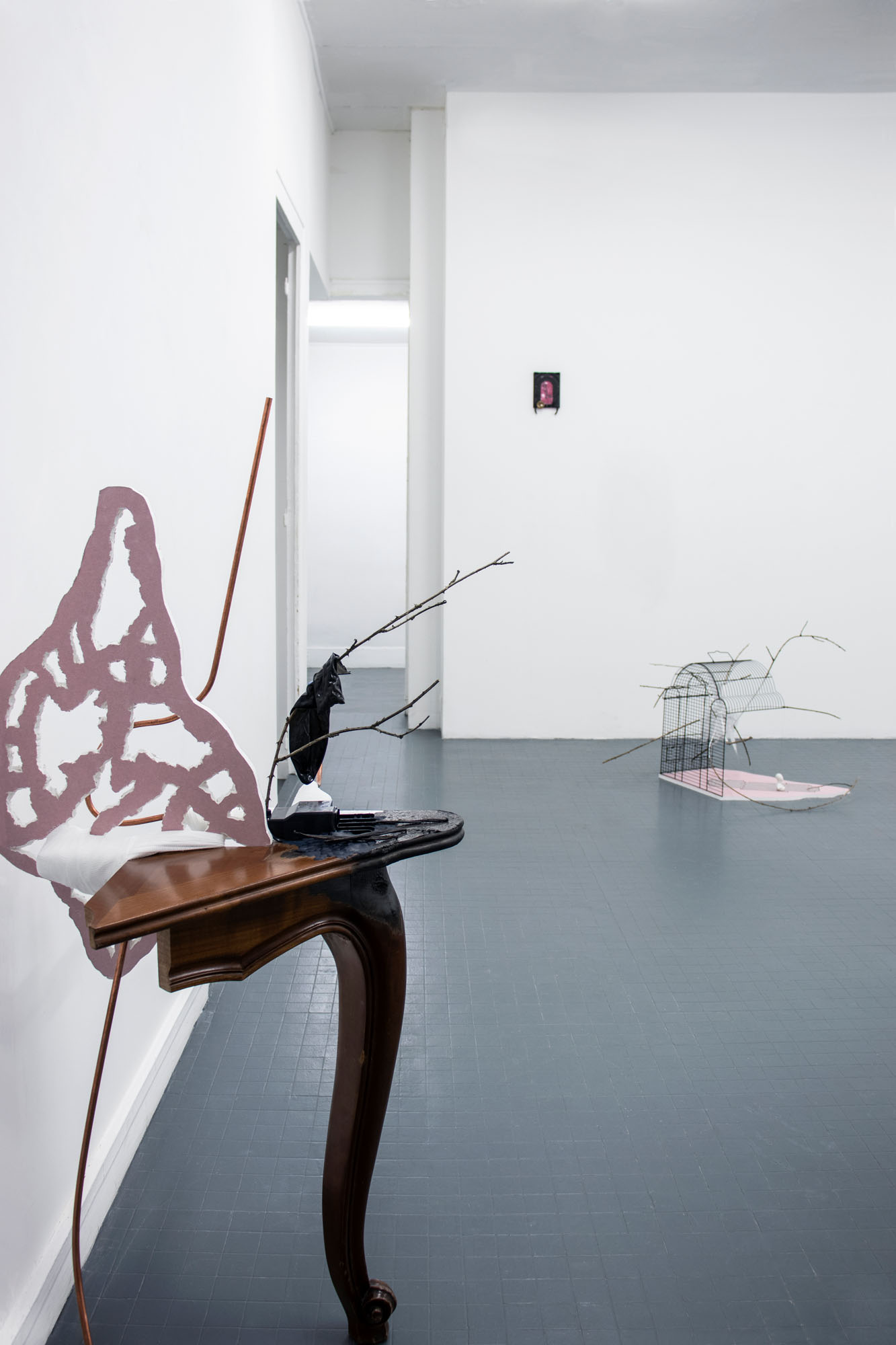
The place was called Les Limbes (Limbo), which had everything to please me. I was going to spend the night in Limbo. I kept repeating this sentence over and over again, almost like a mantra: “night in limbo, night in limbo, night in limbo”. Realizing that this name might play a role in my text, I decided – without telling anyone – to activate a second methodological device, which I summarized as critical paranoia. This device consisted in transforming as many things as possible into meaningful elements and in accepting to follow the path traced by these signs. By activating this second device, I was only transforming a theoretical principle into something that I had always done in a very spontaneous, not to say sickly, way. I’ve always had a passion for signs, which is why I soon found myself working on apocalyptic questions with apocalyptic tools.
An hour later (the train station was only a twenty minute walk from Les Limbes, but I had stopped on the way to do some shopping and get something to eat), I arrived at my destination. The small brand new key that I had been given contrasted with the dilapidated aspect of the façade, which again had everything to please me. Inside, I could already make out the works of Antonin. I was going to say “the beasts”, because the one closest to the entrance seemed to me immediately animated, animal, or worse. A piece of table with only one leg was sticking out of the wall and joined to copper pipes bent to form a creature with which I was going to talk to at my leisure. Something obscure was emerging from the surface of the table. As I approached it, I realized that it was a kind of small charred still life which I sensed must have had the value of a rebus or an enigma. It was nearly eight o’clock and the summer sun was slowly fading. The light was tenderly spreading over this limbo where I was now staying.
I took a tour of the exhibition to familiarize myself with the space and decided to sleep in the small room on the left. I set up my self-inflating mattress and watched it fill up with air as I thought about death, love and other things. As I unfolded my sleeping bag, I found myself face to face with another charre corner of a table on which morel mushrooms whose small dried-up bodies were covered with surgical steel piercings. I thought back to what Antonin had told me about rites of passage and I began to understand what the process of obscuration he had decided to implement here could mean. Everywhere within the walls of Limbo, human and non-human bodies were testing other bodies.
The presence of the morel mushrooms whetted my appetite, so I sat down on the floor and ate some bread, hummus and a few black olives. Then I thought that the black and shiny pits could have had their place on one of those table corners. And I wondered if this possibility was already a desire, and if this desire was in fact mine, or that of the table corners or that of pits themselves.
I spent some time looking at the works, silently begging them to reveal their secrets to me, and then I lay down on my bed. It wasn’t quite dark yet and I realized that it would be difficult for me to fall asleep. I tried to meditate, hoping to dive into the arms of Morpheus without even realizing it. At times I felt my body vibrate and I thought it was what scholars called going into a trance, but it was just the works around me that made the summer night sparkle, and vice versa.
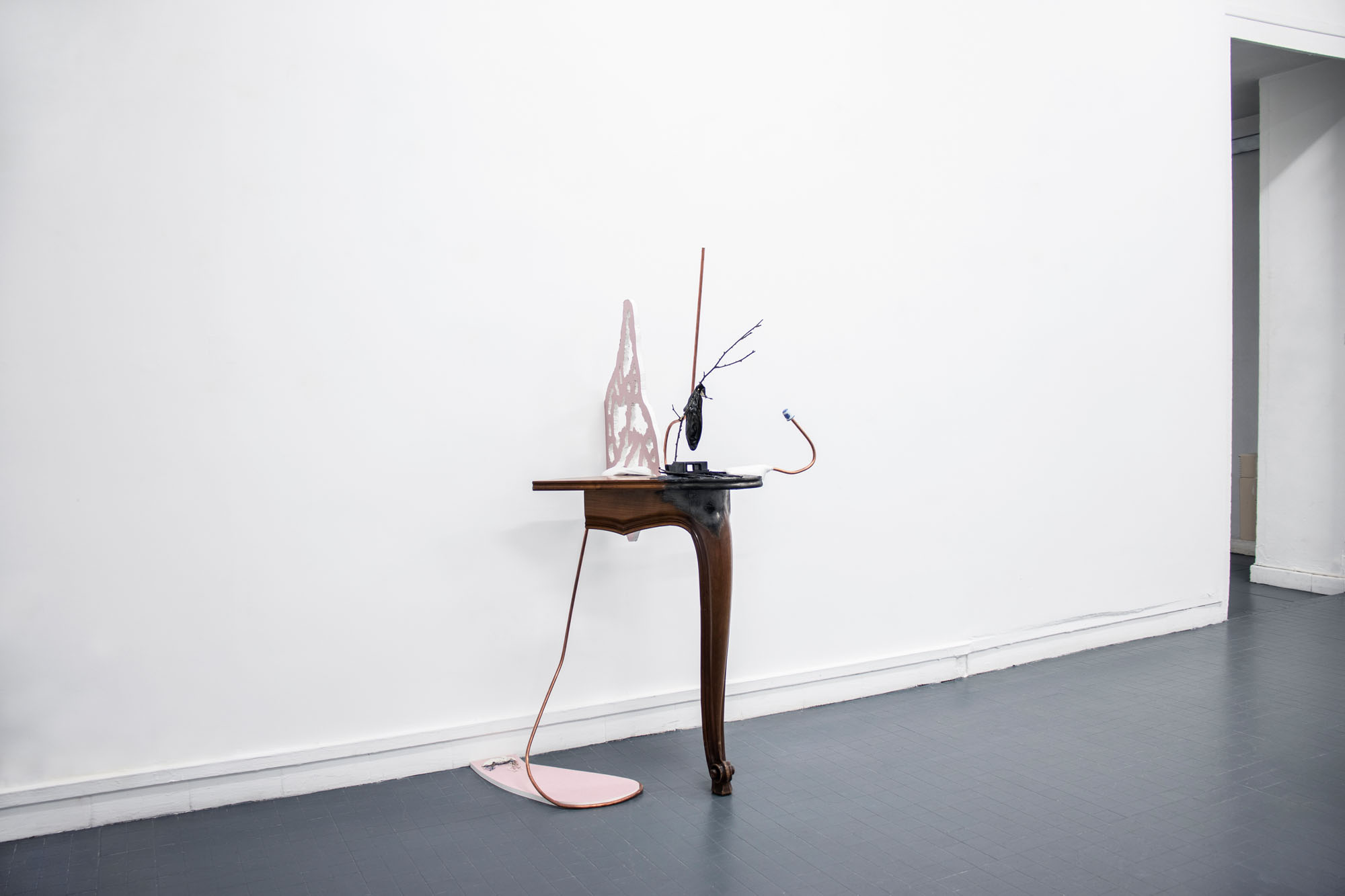
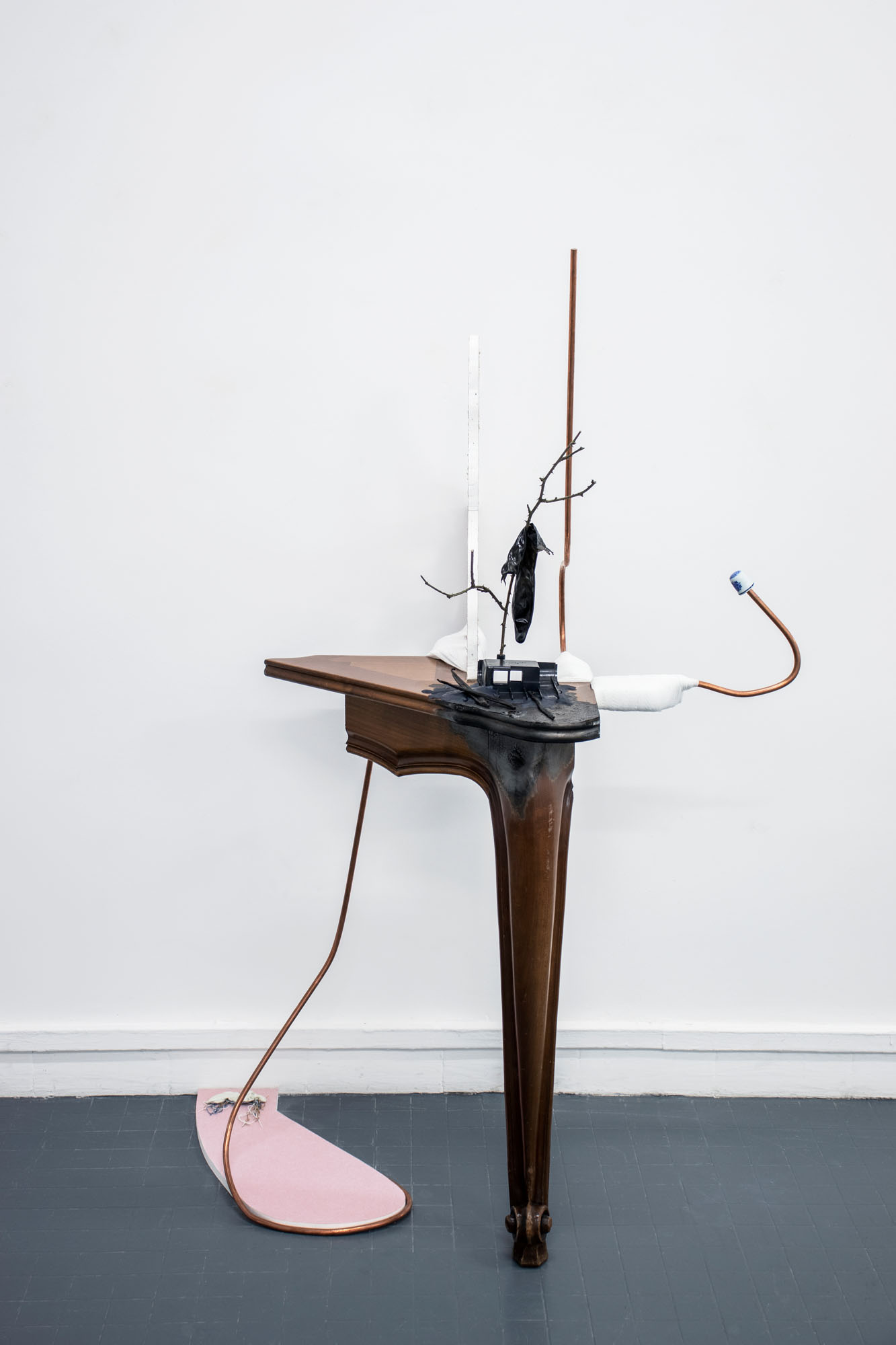
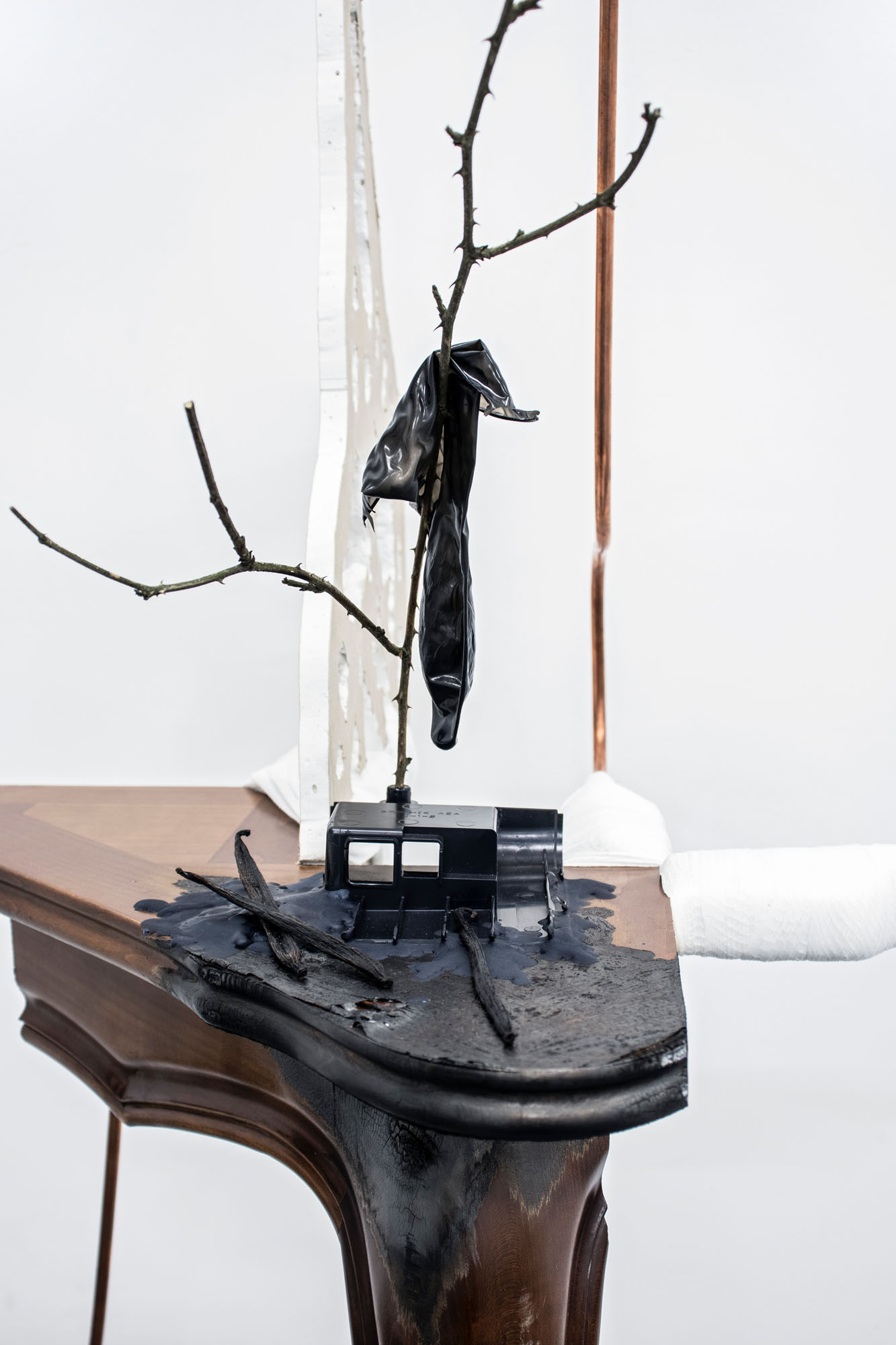
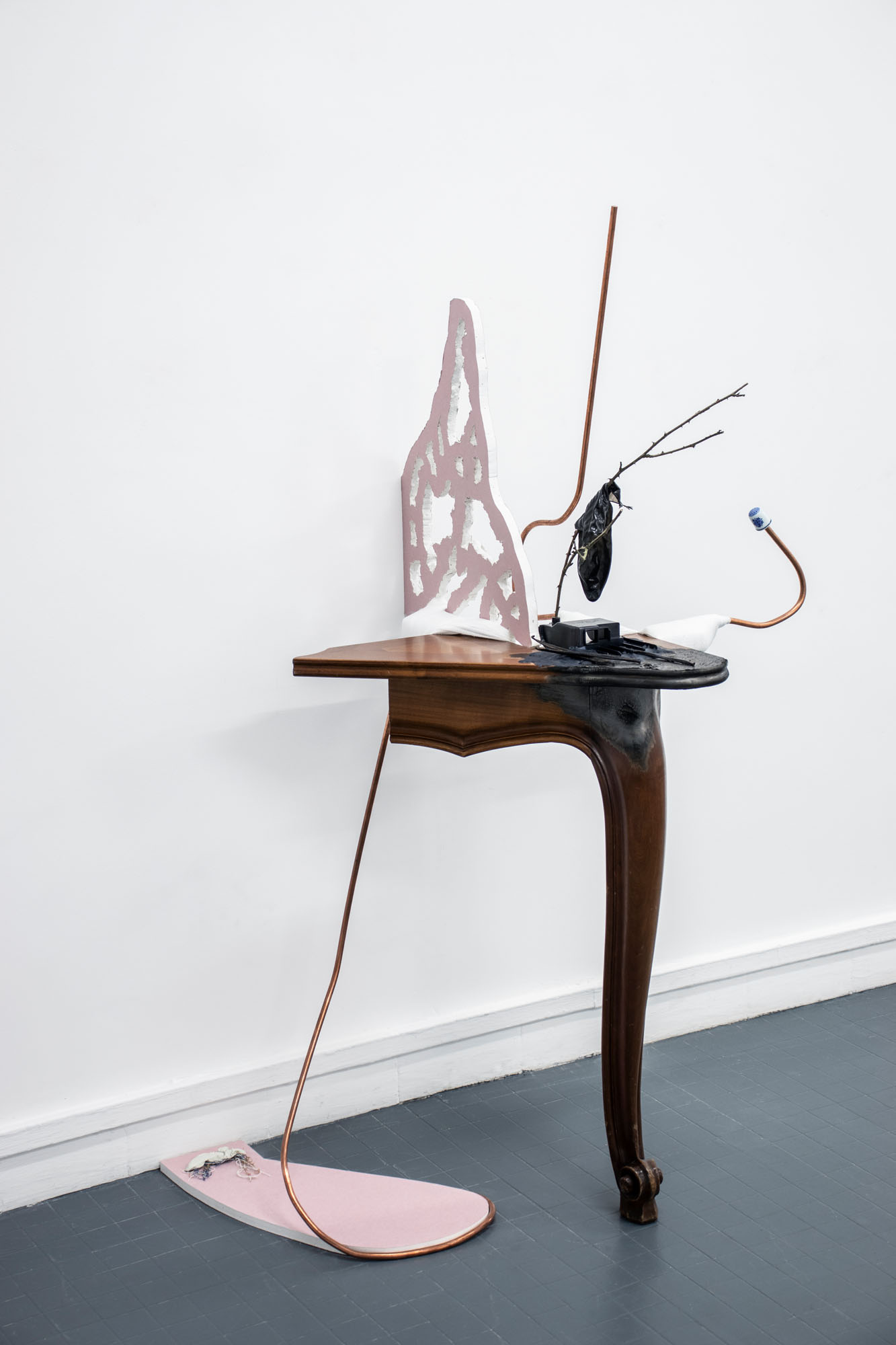
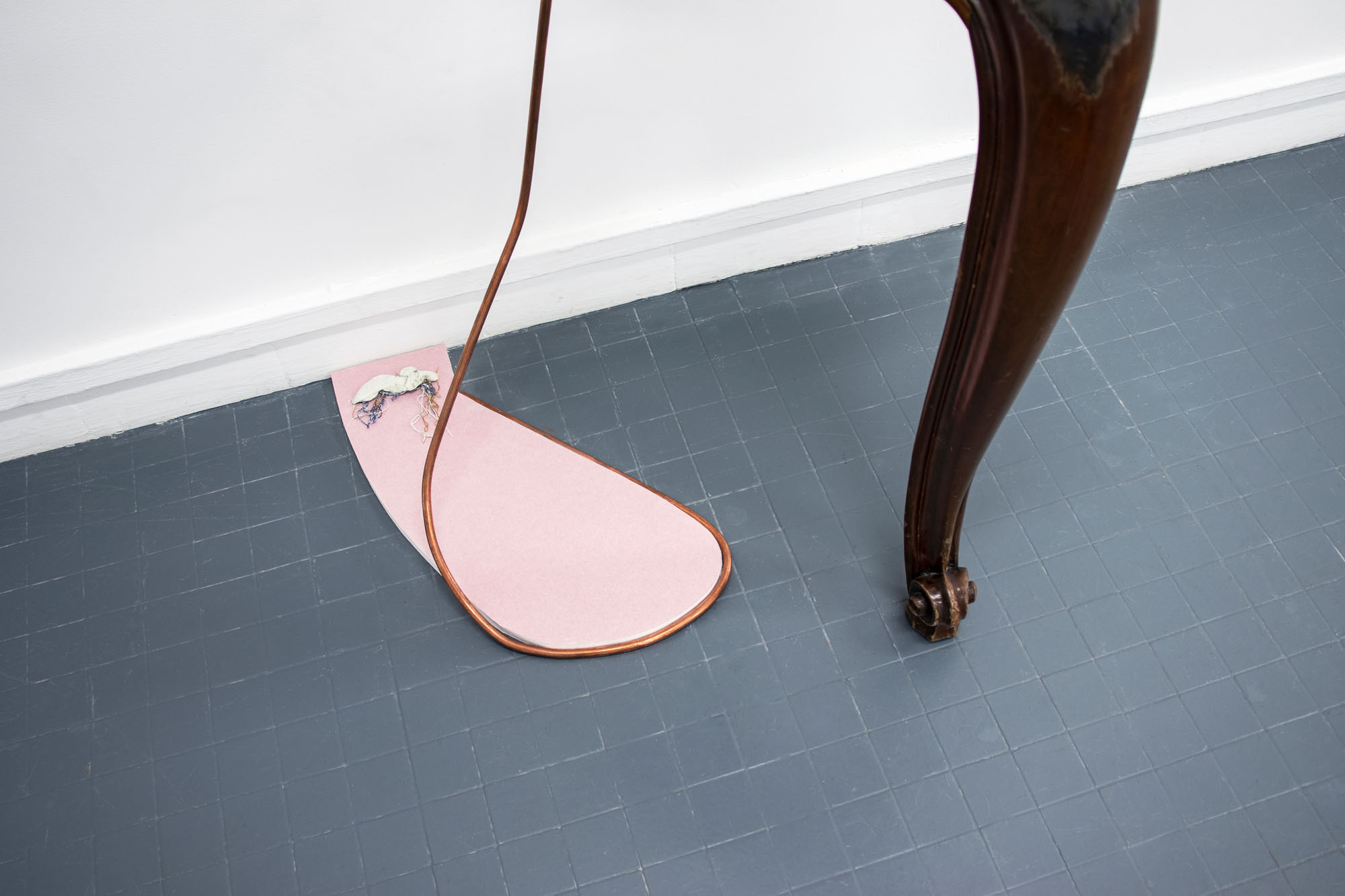
I started to think while dozing off, or dozing off while thinking, and everything started to blend together inside me. At first I remembered that in Christian theology, limbo was a fuzzy, intermediate space, and I thought that such a space lends itself well to the unfolding of hazy wisdom. Then I thought about what Keats, in a letter, had called “negative capability”, which he defined as ”the capacity to stay in uncertainties, mysteries, doubts, without any irritable reaching after fact and reason”1. This idea of negative capability plunged me into a kind of bliss. I felt so good that I came to thank the world for being the world and burning my skin every day every night. It was a kind of prayer but it was not mine. Lying there on the floor of limbo, I felt like I was part of the exhibition. I was a kind of warm-blooded piece of furniture, and a kind of ghost with bandages applied to my wounded limbs, not to really heal them, but to help me to pass through the wound and to see the world for the first time.
A thud from the street came to me out of my drowsy state. The thoughts I had just mentioned were still floating around in senses, I thought of Antonin and I couldn’t help but blame myself. Time was running out and I still hadn’t written anything. What I hadn’t specified, the day I had accepted to write this text, was that I hadn’t written anything for months, maybe even years. I had been admitted as a PhD candidate in extremis, shortly after this incapacity was declared. Officially, I had been working on contemporary art in extinction times for a little less than two years, but in reality I was no longer sure I understood the meaning of the word “work”. Most of the time, I would write the same sentence over and over on my screen (a sentence that I hid somewhere in this text), which, on bad days, gave me the unpleasant impression of looking like Shining’s Jack Torrance, only slightly less tormented. I’m not saying this to complain about my fate – but to sharpen against the stone of crisis the blade of my tongue (with all that it promises in terms of anger and revolt).
Definitely unable to sleep, I decided to get up and get some fresh air. This time, the night had already fallen. I lit a cigarette and enjoyed the calm and warm night. The street was almost unlit and I thought I saw a shooting star in the black blue sky. I then realized that I was in Henri Barbusse street, and that the only thing I knew about this man was that he wrote a book called Le feu (The Fire). I told myself it was a beautiful title, and I wished for it to be a clue or, better still, an omen, as the paranoidcritical method would want it to be.
Afar, on my left, a silhouette was standing on a balcony. She was singing a tune that sounded familiar but I couldn’t recognize it. It was like one of those pathetic and heartbreaking Greek songs, but slightly more joyful. I smoked, thinking about the makeshift bed waiting for me inside and about the works that were silently watching.
Thinking back to the small natures mortes2 composed by Antonin on the table pieces spread around the exhibition space, I thought to myself that they were actually not dead at all. They were instead offerings in the form of symbols that would have been collected during some initiation ritual. I then thought I understood the meaning of the word rite, in the expression rite of passage. As an initiation, the rite of passage is a codified test that will allow access to a new status recognized by society. The Latin ritus refers not only to religion but to all the devices through which the social world is organized. But the rite also has the function of establishing links between the human and the non-human by making him/her pass through thresholds of transformation.
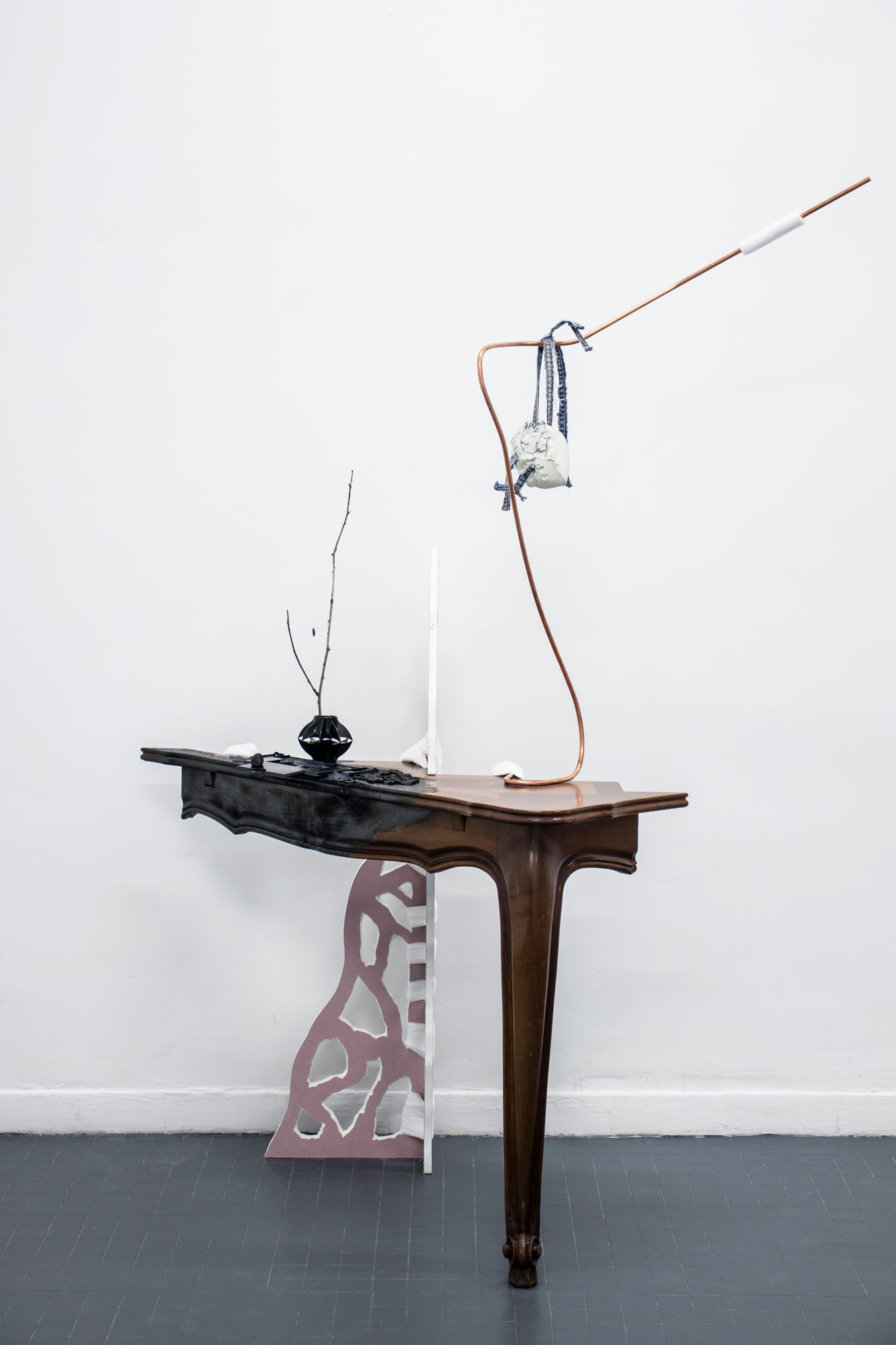
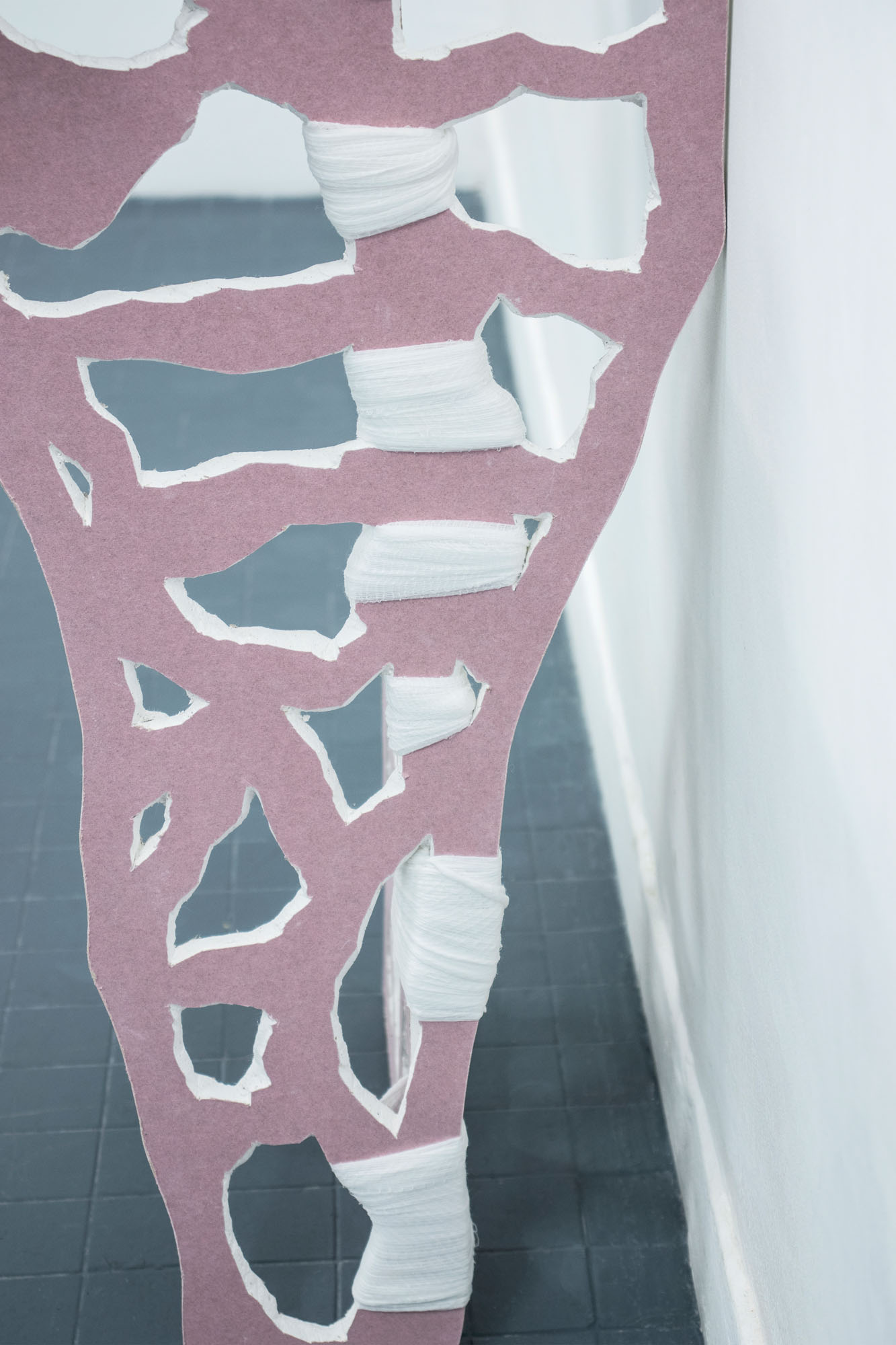
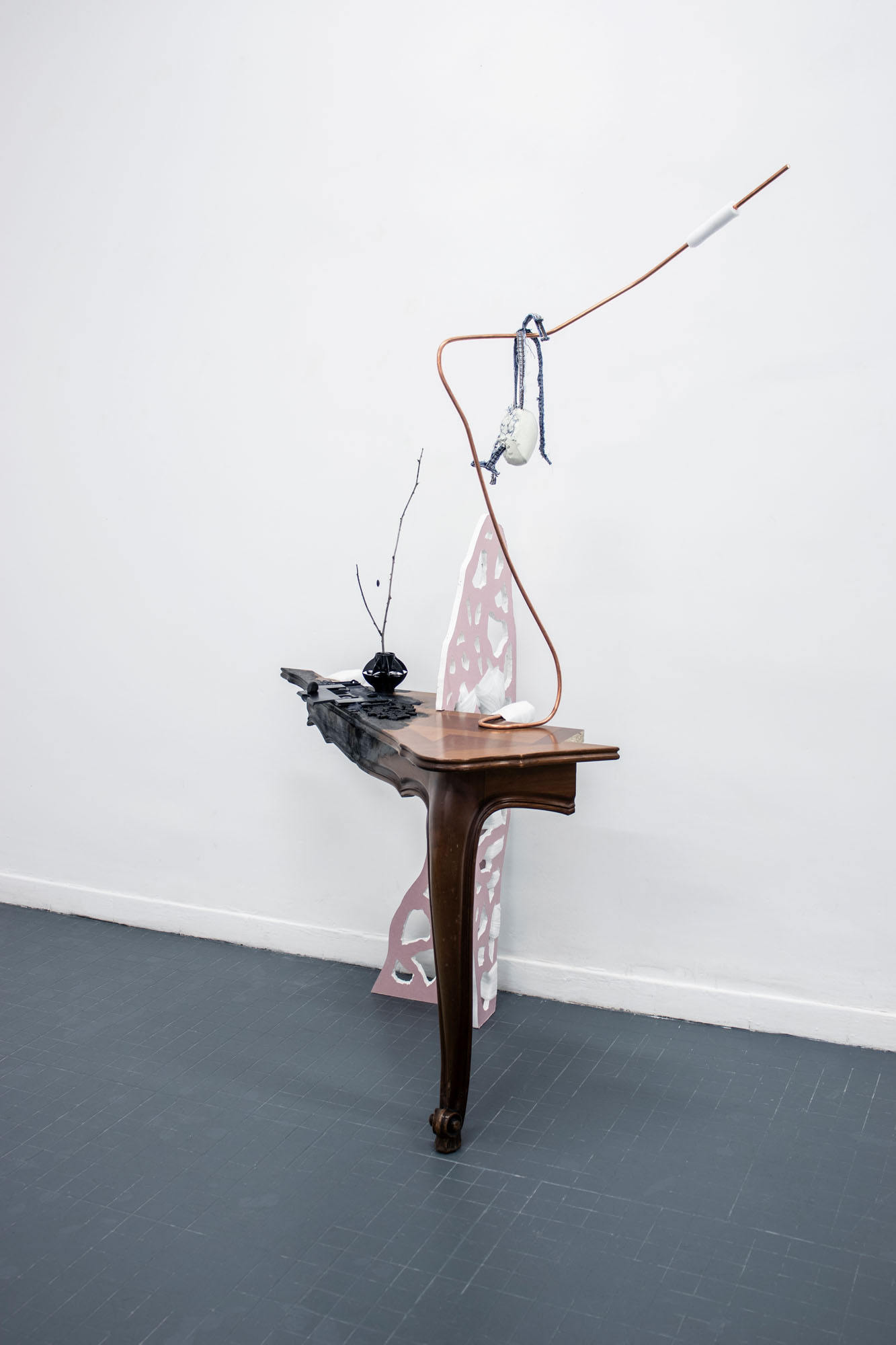
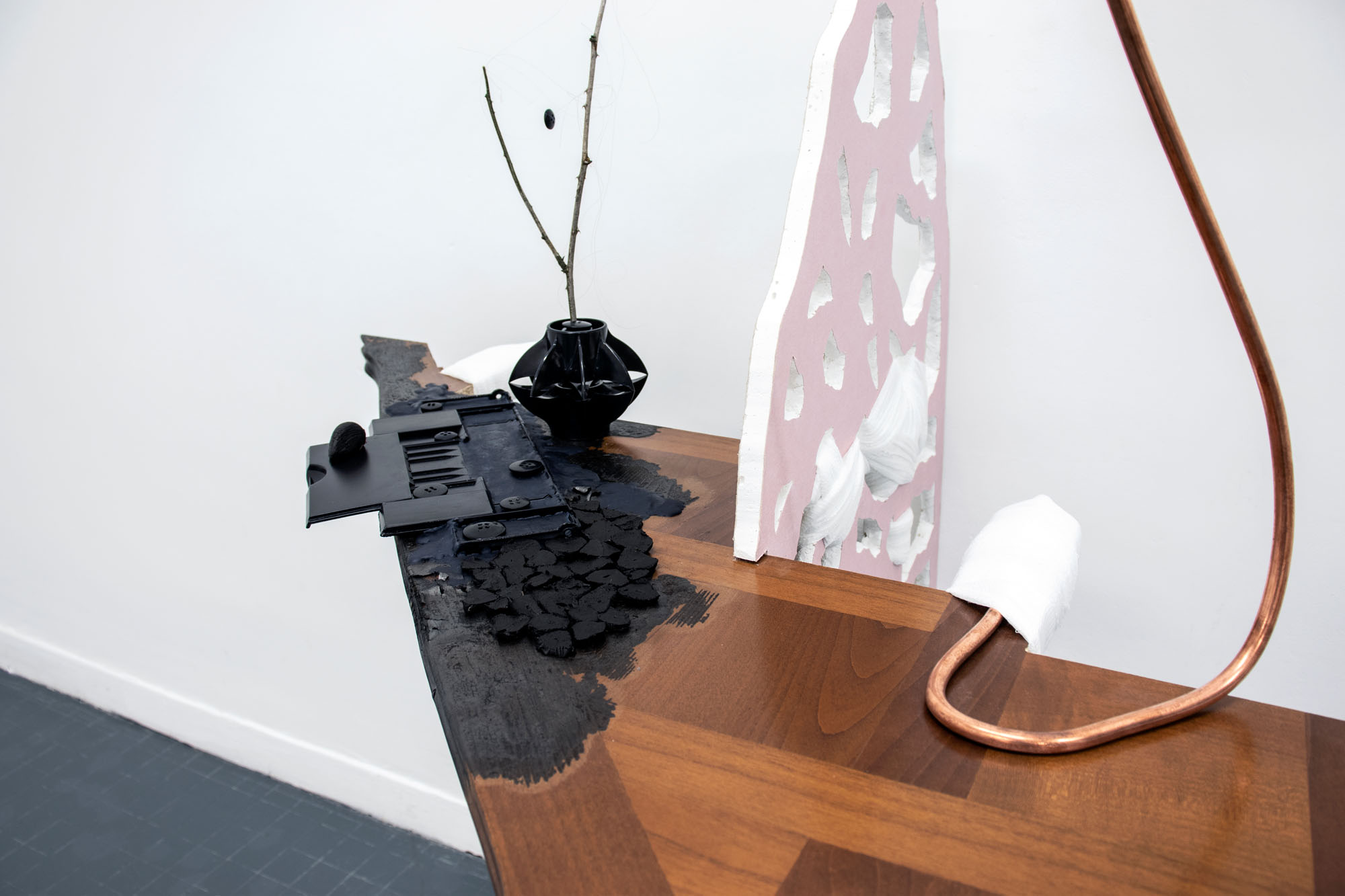
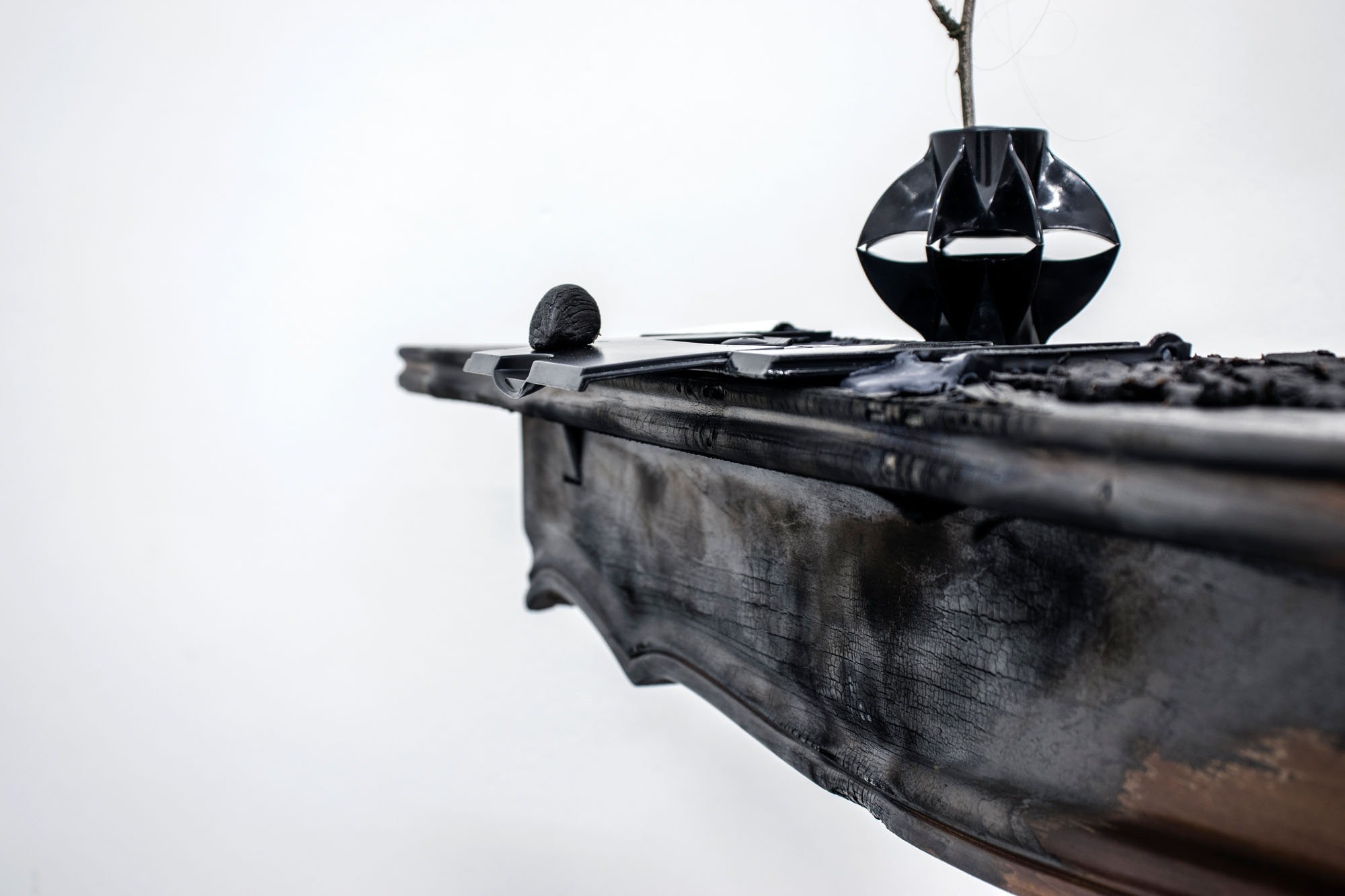
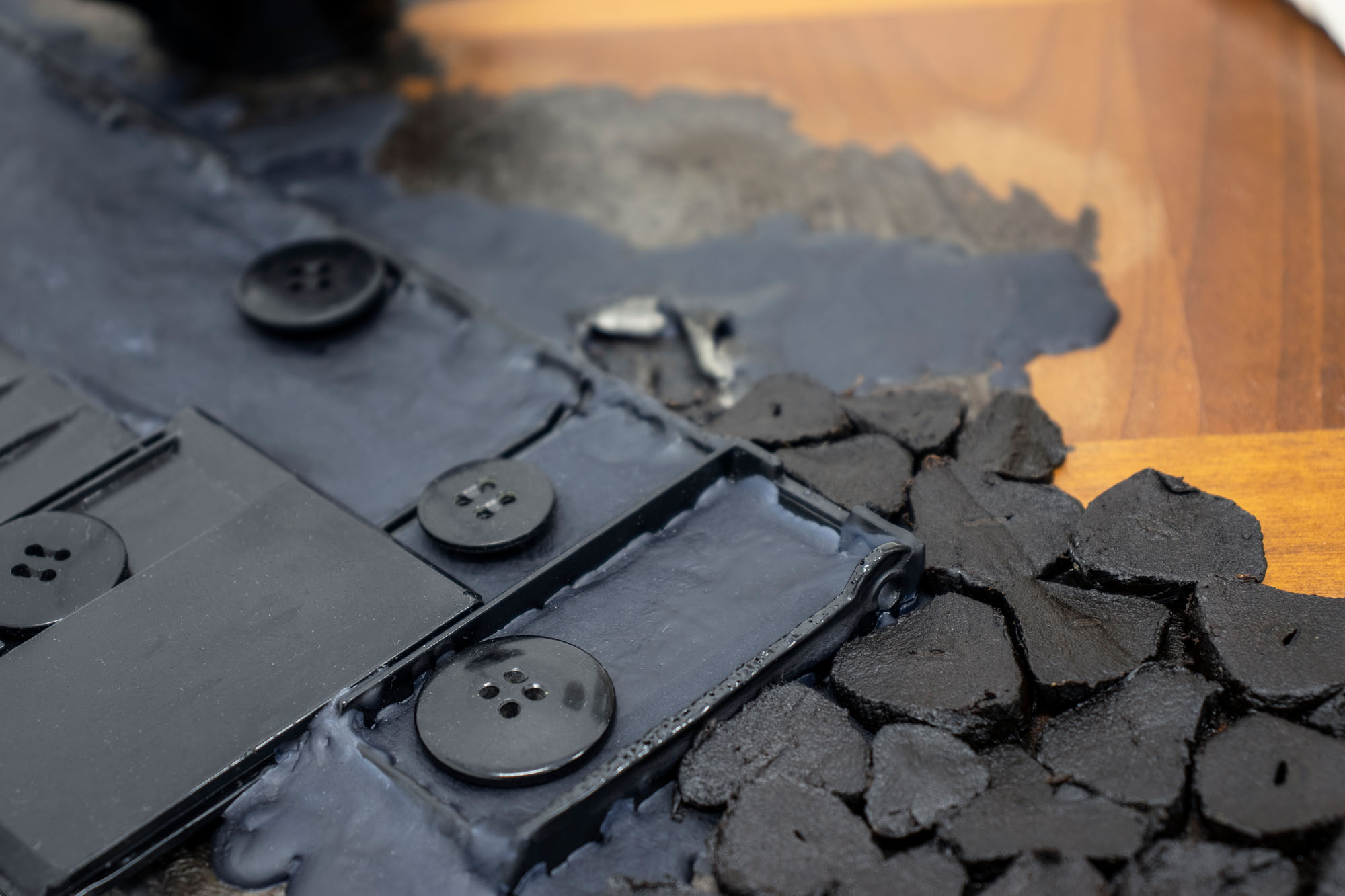
In the rite of initiation, the individual enters, so to speak, into combustion. His identity catches fire and then true individuation can begin, through contact with the other and affectivity. This is how the creature, affected by the world, is transformed and individuated. I know I am taking shortcuts, but sometimes time is pressing, and the story of truth interests me less than the present needs of our struggling heart.
These ideas swirled through me and made me think of the Eleusinian Mysteries3. According to Aristotle, this pagan cult was not a knowledge (mathein in ancient Greek, like in the words ‘mathematic’ and ‘polymath’) but a trial, an experience, a suffering (pathein in ancient Greek, like in the words ‘pathetic’ and ‘pathologic’). We do not know much about this strange celebration, but it is said that at one moment of their initiation, the initiates were witnesses of a great fire and that their spirit had to pass through it. When I came to Les Limbes earlier in the day, I had noticed that the street of Henri Barbusse, the author of The Fire, was perpendicular to the street of the Trial (la rue de l’Epreuve). Faced with this additional coincidence, I couldn’t help think that the world was trying to tell me something. I stood still for a few moments, as if I was waiting for another sign. But nothing came, except some barking in the distance. So I went back to bed and fell asleep immediately without even realizing it.
A few hours later, it was the sun itself that woke me up. I was sure I had dreamed a lot, but I had forgotten almost everything except for a few bits. For example, I remembered that at one point Antonin came to set fire to the exhibition space, in which I had installed a large bed that almost looked like a boat, and that he enthusiastically told me: “It’s for Dionysus! It’s for Dionysus! “, before adding “we must first save the objects”.
Objects, in fact, require repair. This does not mean that humans have to repair objects in the usual sense of the word (quite the opposite, in fact), no, it does not mean that humans have to compensate objects. In fact, most non-capitalist cultures (i.e., today, almost none) have always practiced such compensation, and better yet, have always practiced it in advance, taking care not to be in debt to things. What I am saying here about things could apply to all non-humans. The others, all the others, ask to be listened to. The materialism of tomorrow – Antonin says it with the forms he makes – could not be anything else than an alien materialism.
Then I remembered three little pieces of dreams. In the first, I met the Nameless Healer himself, and he had Kafka’s face. He said to me: you know what you have to do, and indeed, in the dream, I knew exactly what I had to do, and it was something very obscure and at the same time absolutely wonderful. In the second piece of dream, I was supposed to take a contest but I was late because of a liver attack. I ran into a teacher who told me that it was too late that I was going to be decorpospirited (in the dream, this word was absolutely familiar to me, and I was almost astonished, when I woke up, to remember that it didn’t exist) and that there was nothing I could do about it. Finally, in the third piece of dream, I was at the seaside where galloping horses formed vast sand whirlpools that came alive and laughed out loud. This last dream is a bit kitsch and maybe I should have kept it secret, but that would have been against my own ethics, which demands that secrets be betrayed.
Once this effort of remembering was over, I opened my eyes and realized that I was not alone. There were ghosts everywhere. But the Nameless Healer was looking after them, going out to meet them in the dark, to make them companions, friends and maybe even lovers. I imagined him in the night, dressed in the raggiest of jeans, singing the saddest of songs on the most dilapidated of balconies, licking the wounds of the world, burning everything in his path so that everything maintained the black fire of passion. At that very moment, when the sun was just about to break over my eyes, I felt as if I understood the words of the song I had heard in the night: “Everything is false, everything is fire, everything through everything.”
— Romain Noël
Translated from french by Antonin Giroud-Delorme & Michelle Son
1. Keats, John (1899). The Complete Poetical Works and Letters of John Keats, Cambridge Edition.
Houghton, Mifflin and Company. p. 277.
2. In French, the word for still life is “nature morte”, which means “dead nature”.
3. In the ancient Greek religion, the Eleusis Mysteries were part of a mystery cult, of an esoteric nature, carried out in the temple
of Demeter at Eleusis. The initiation played there was linked to the Chthonian powers, the rhythm of the seasons and the figure of
Dionysus. The mysteries of Eleusis represent one of the highest forms of Greek spirituality, and their fortune was considerable for
centuries throughout the ancient world.
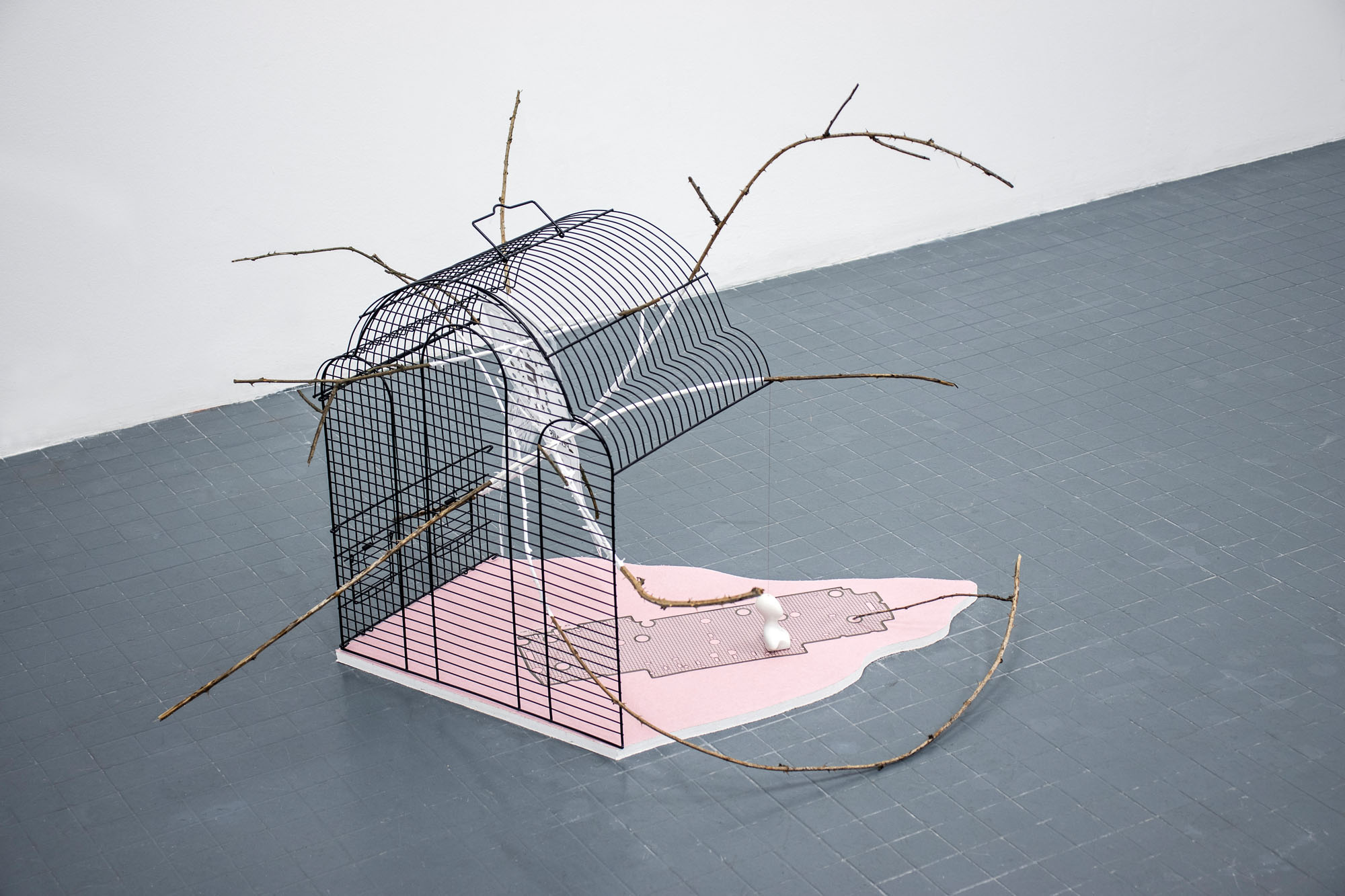
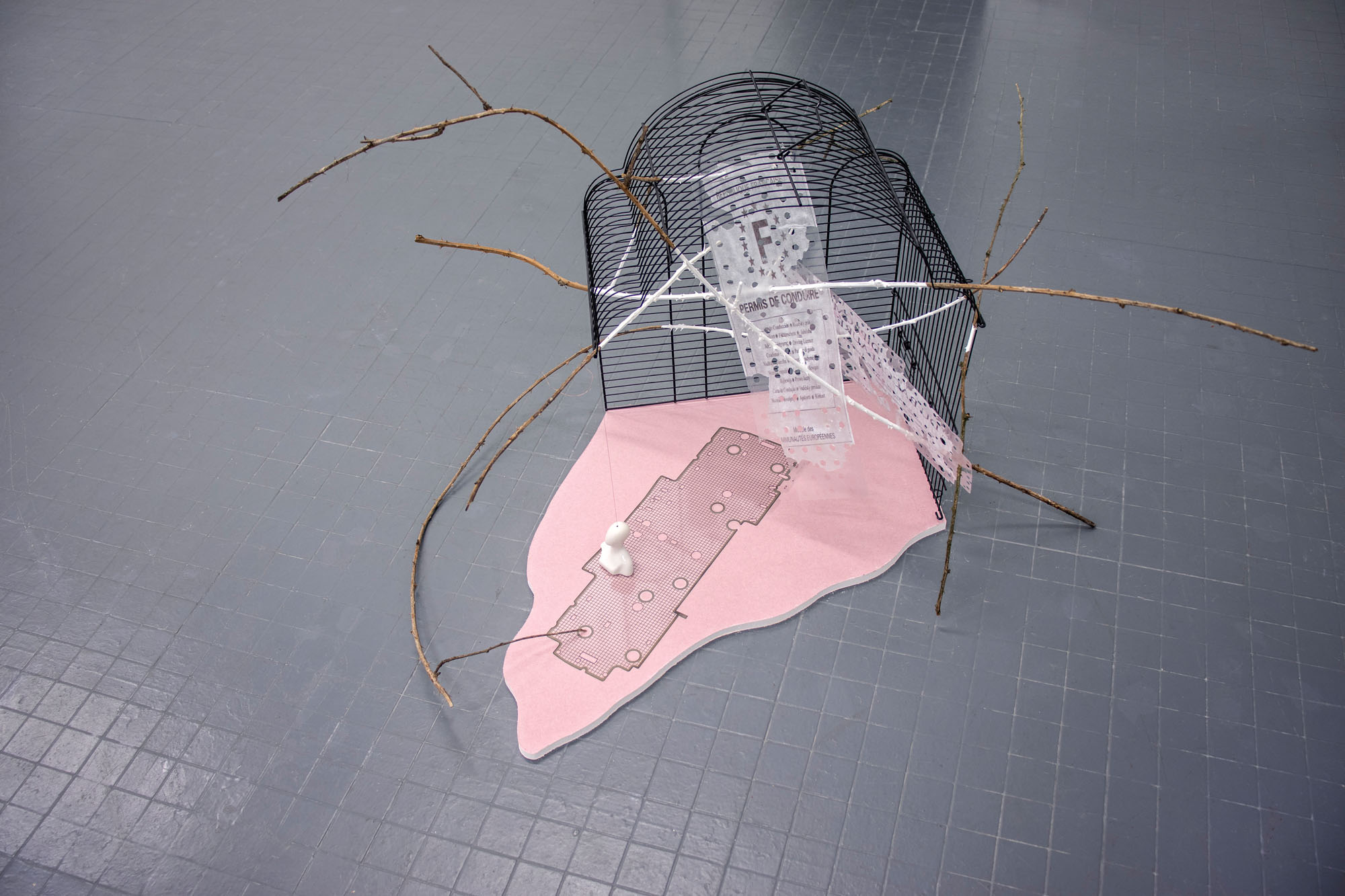
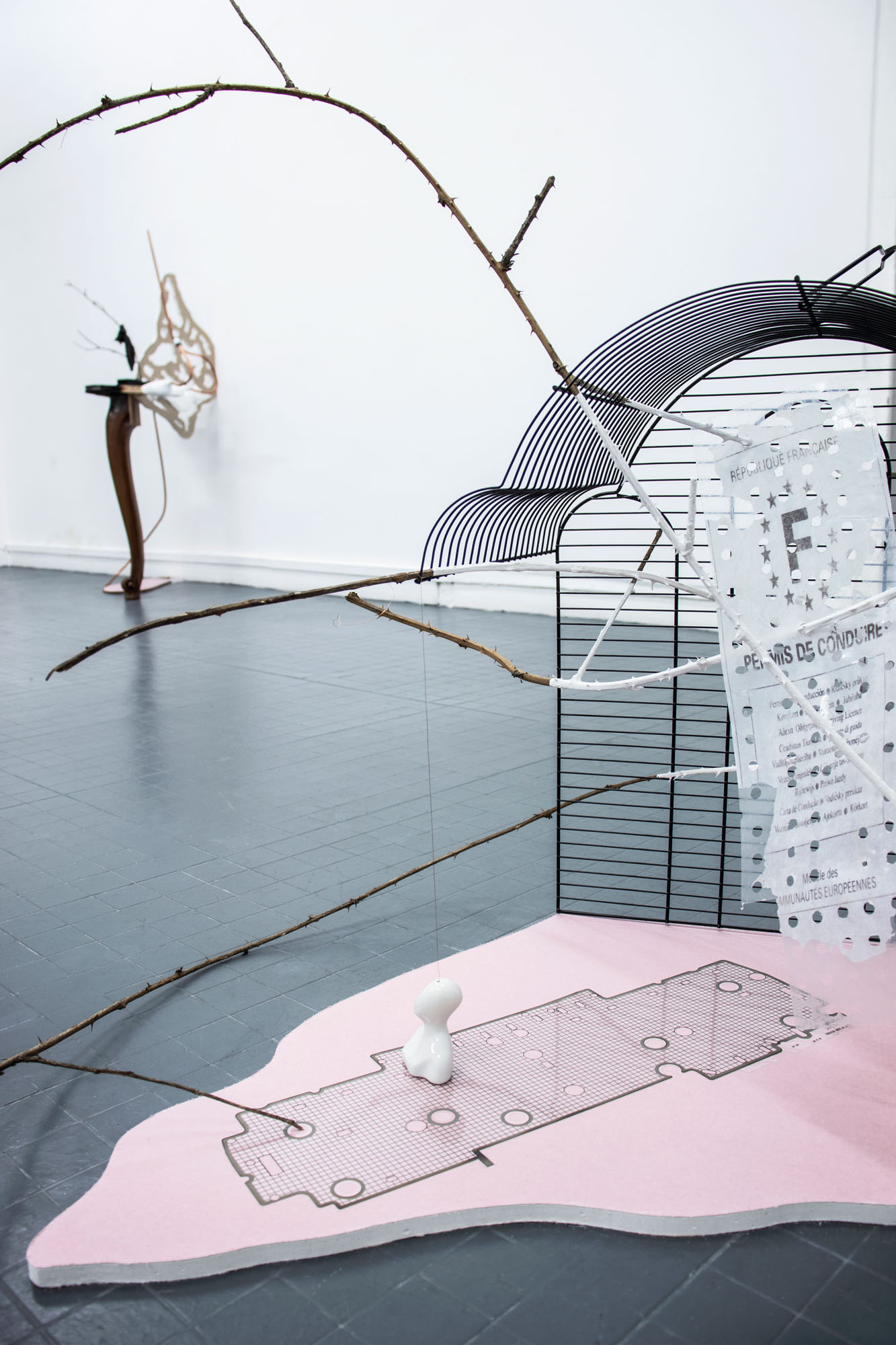
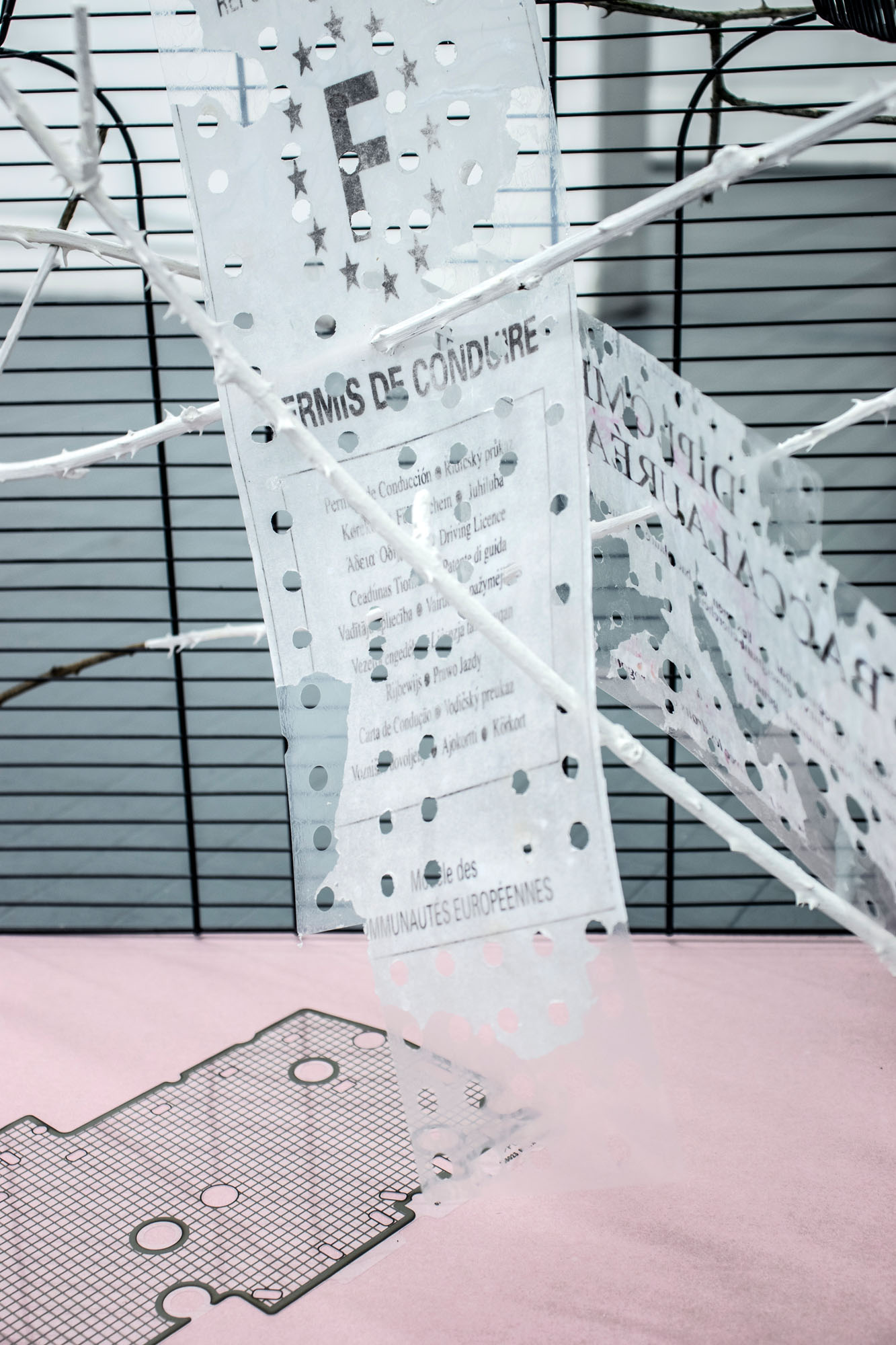
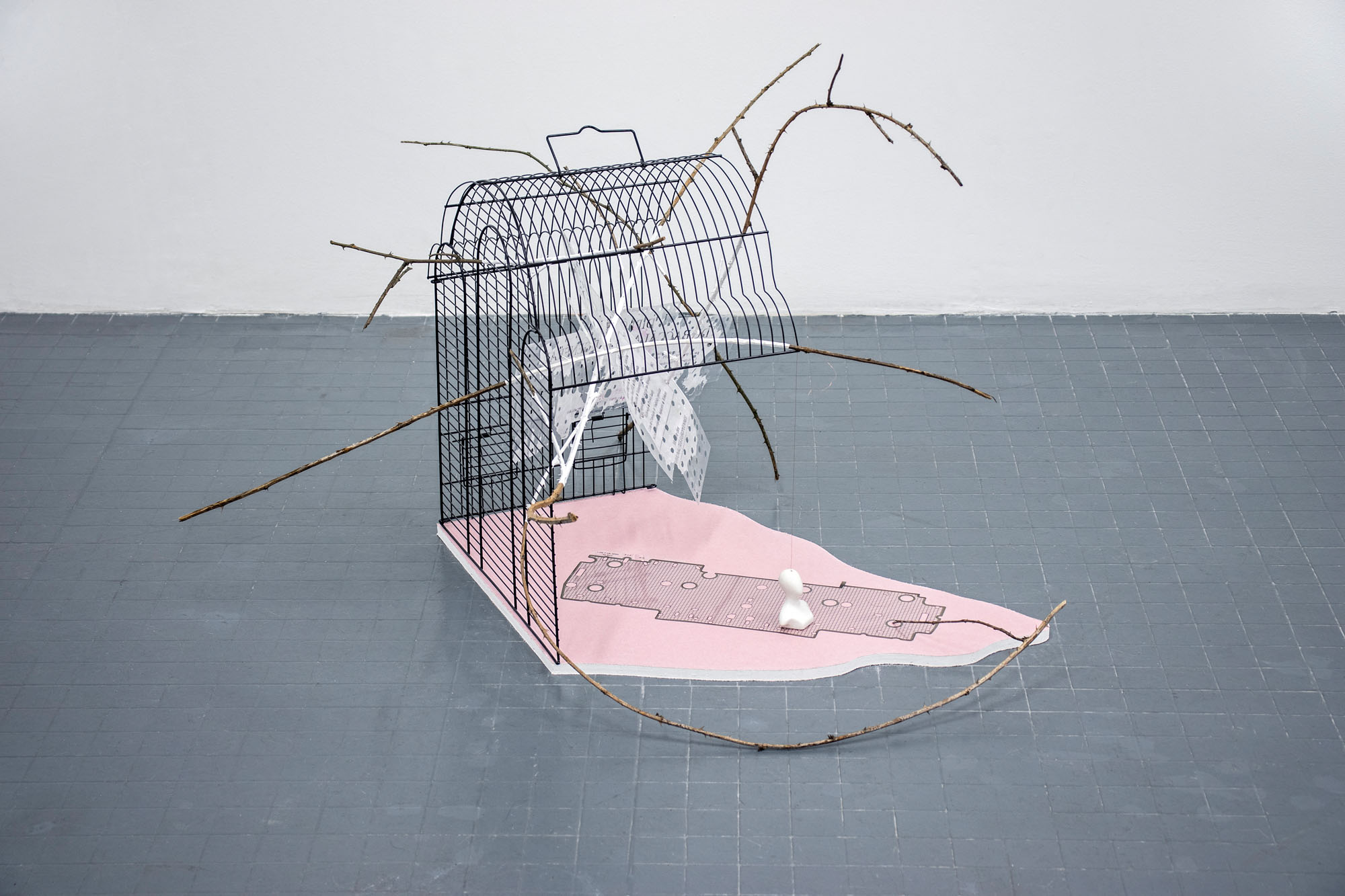
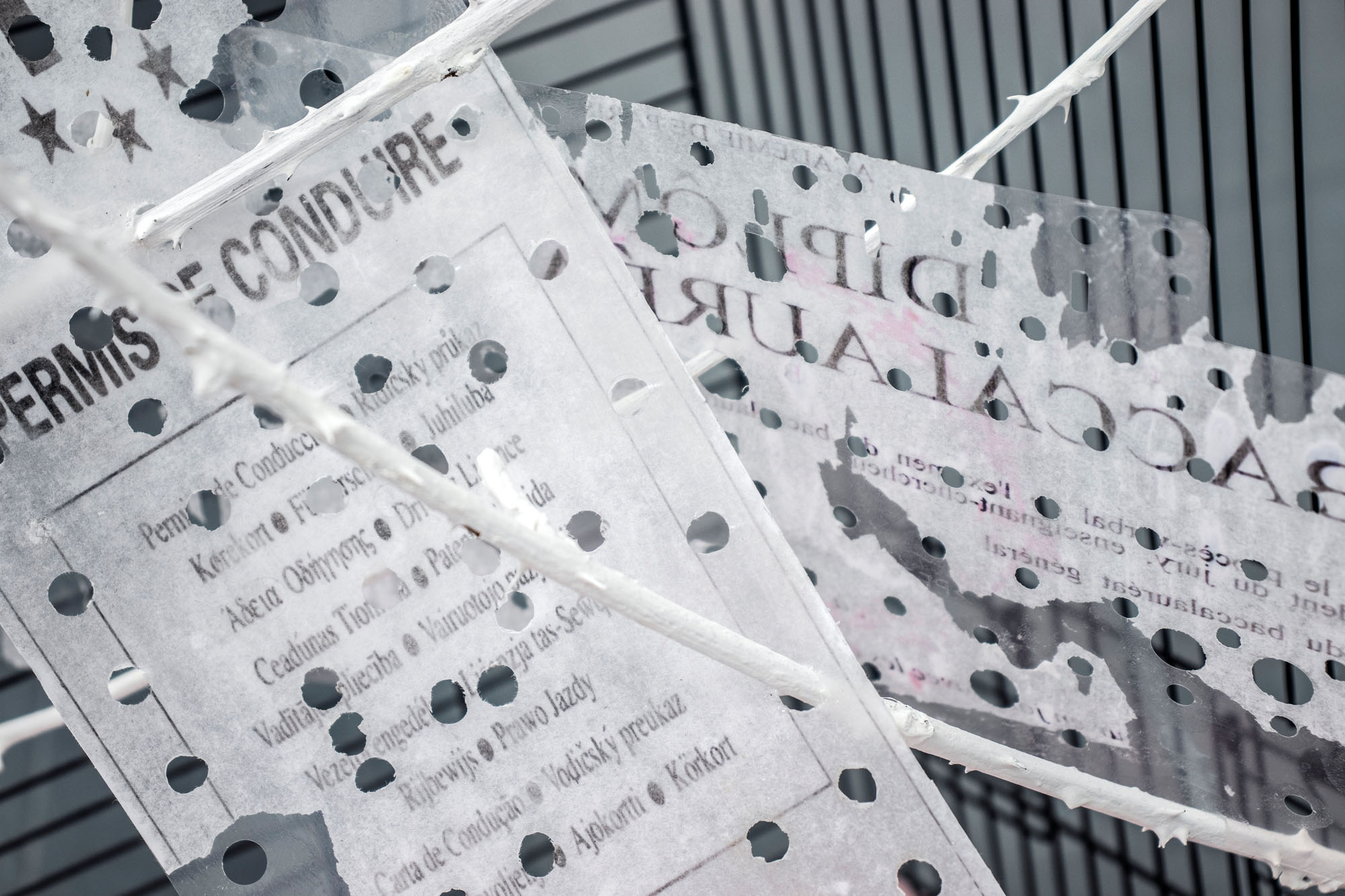
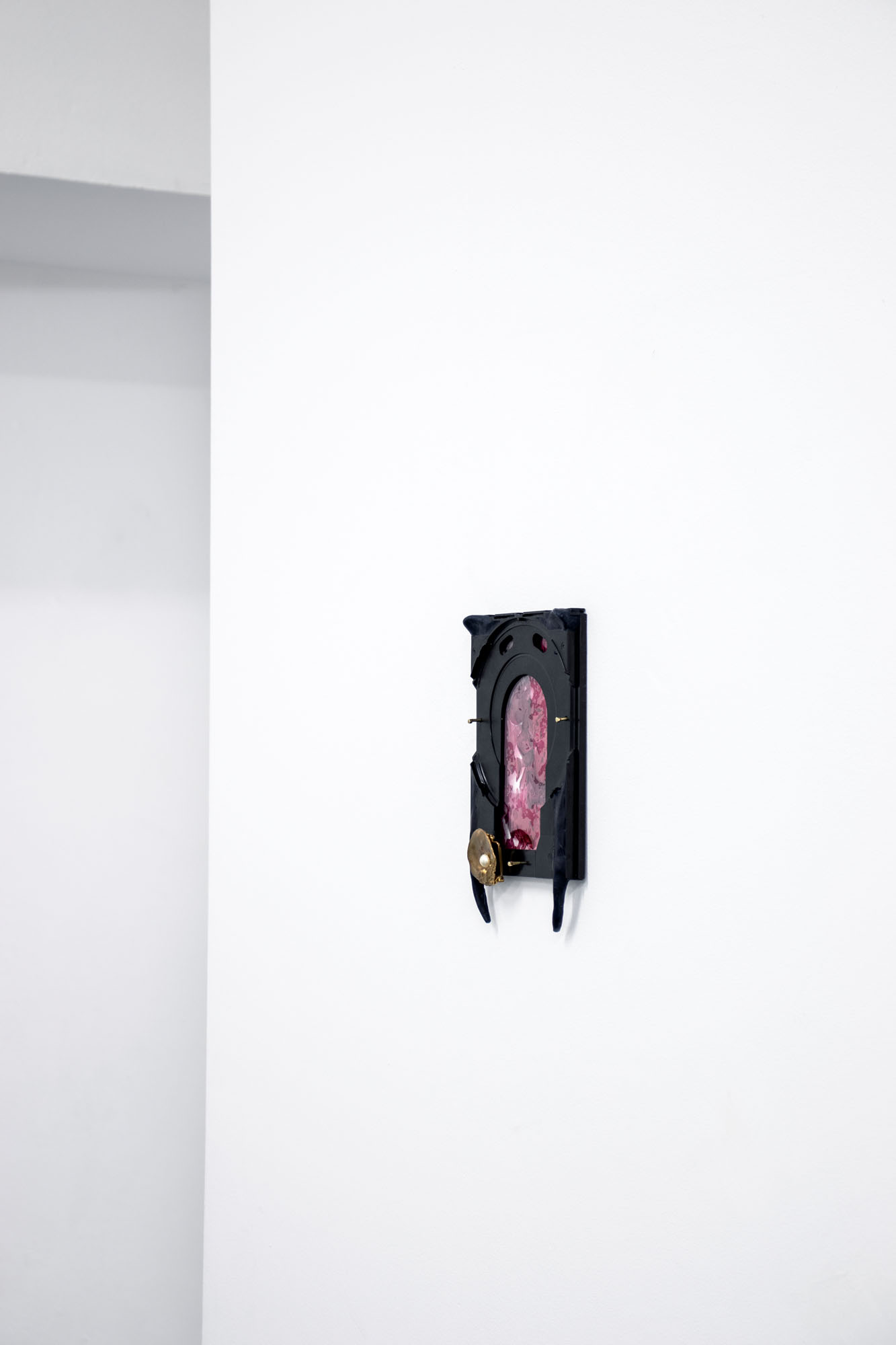
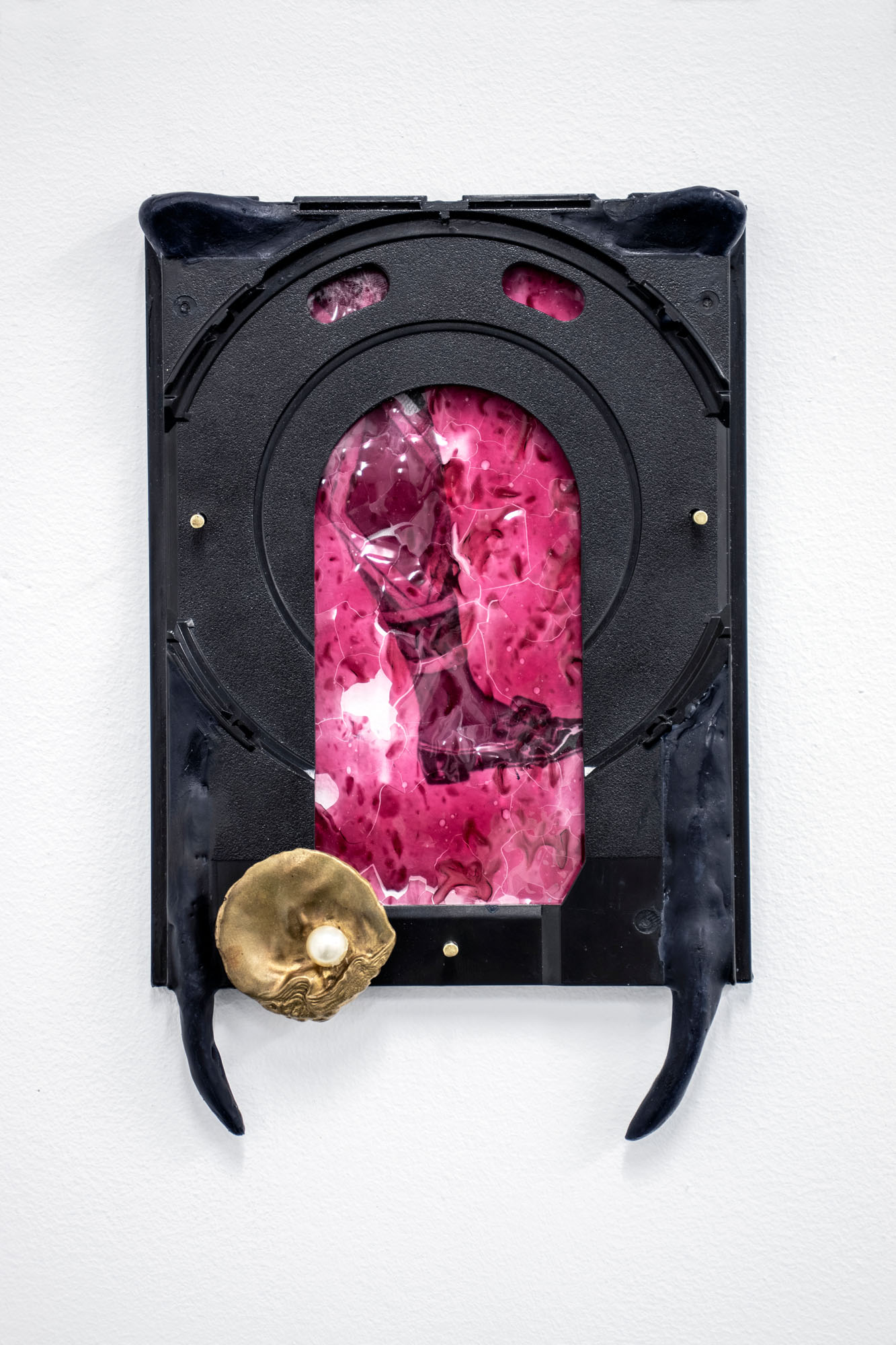
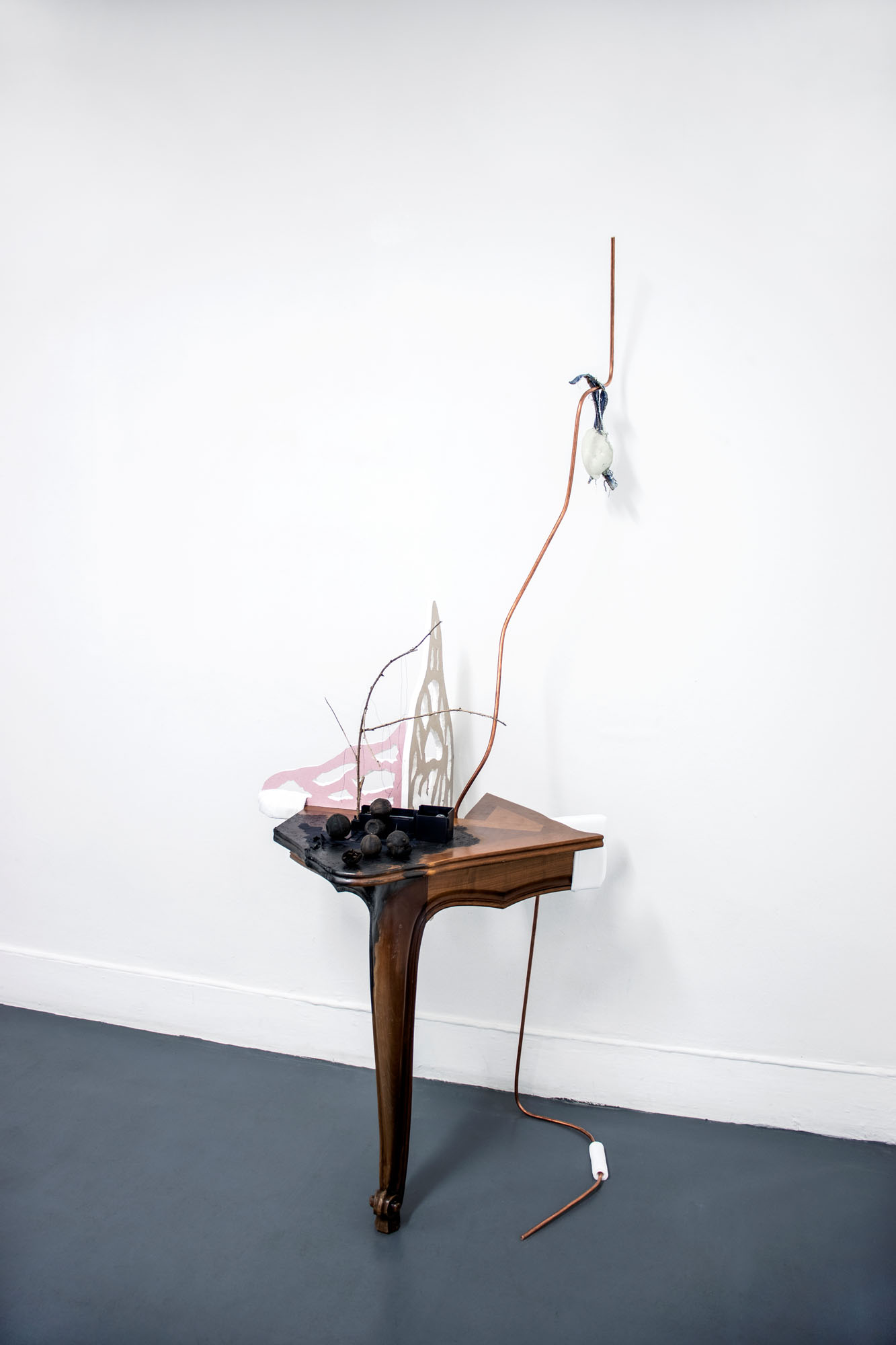
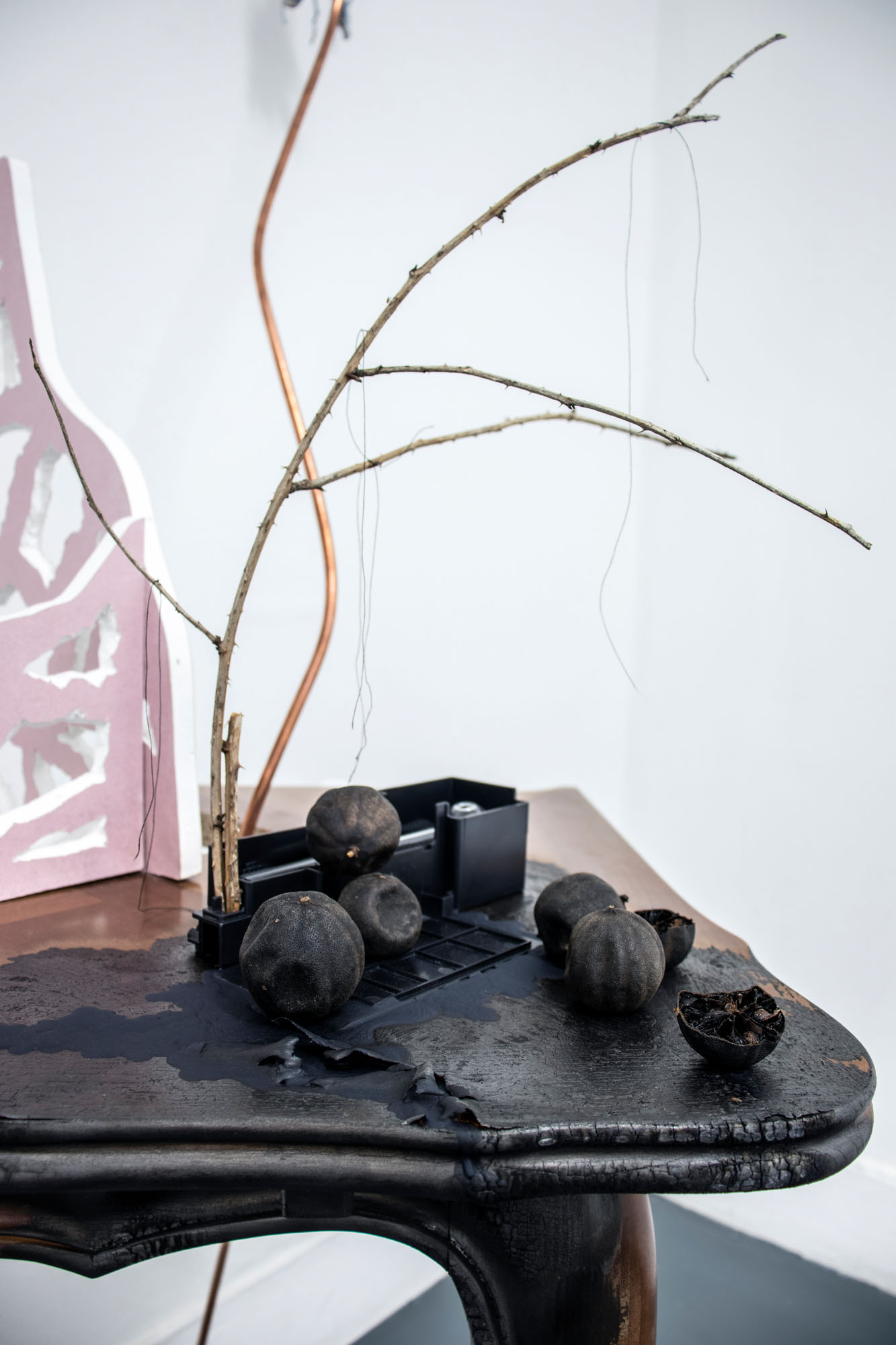
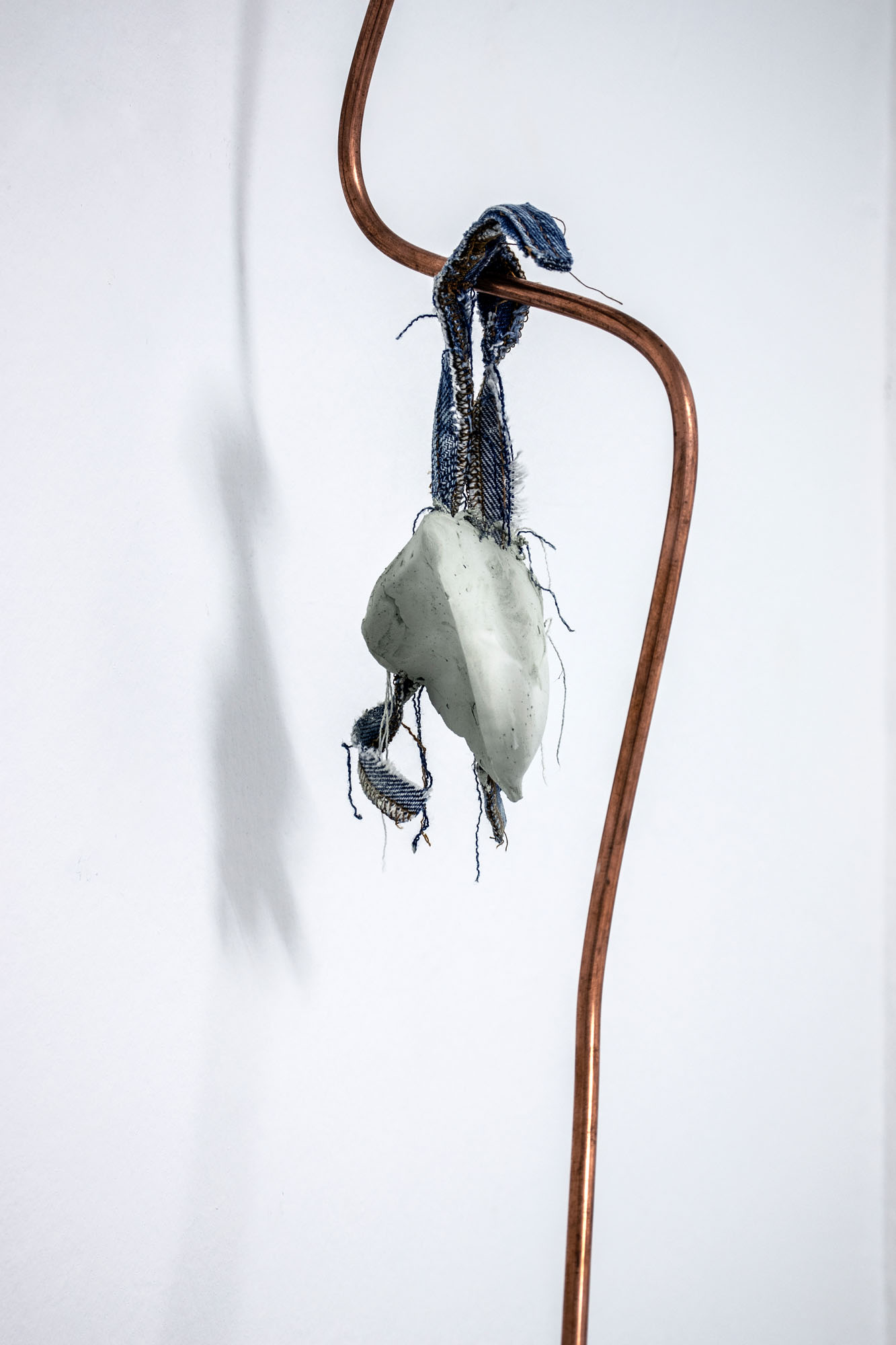
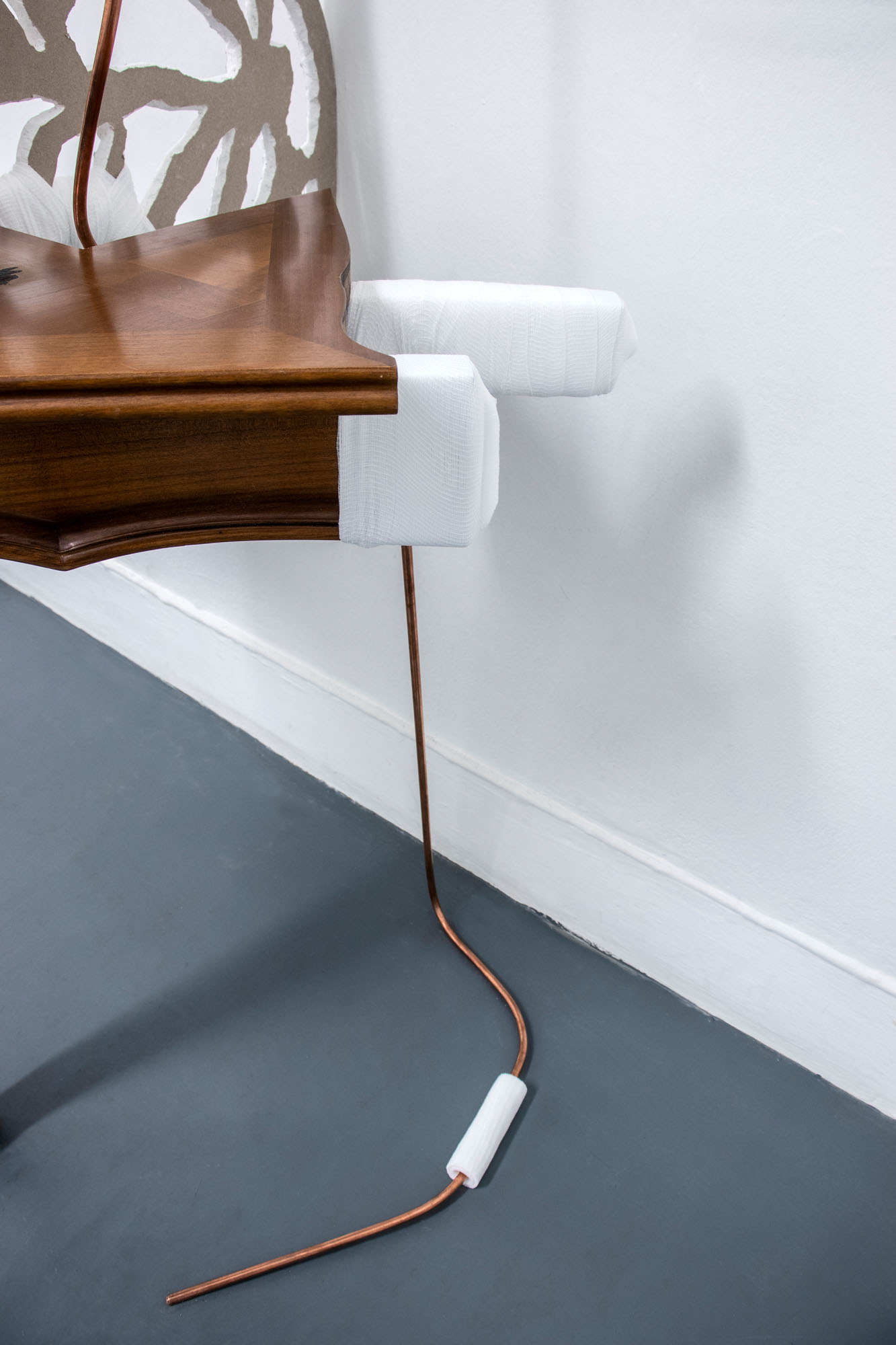

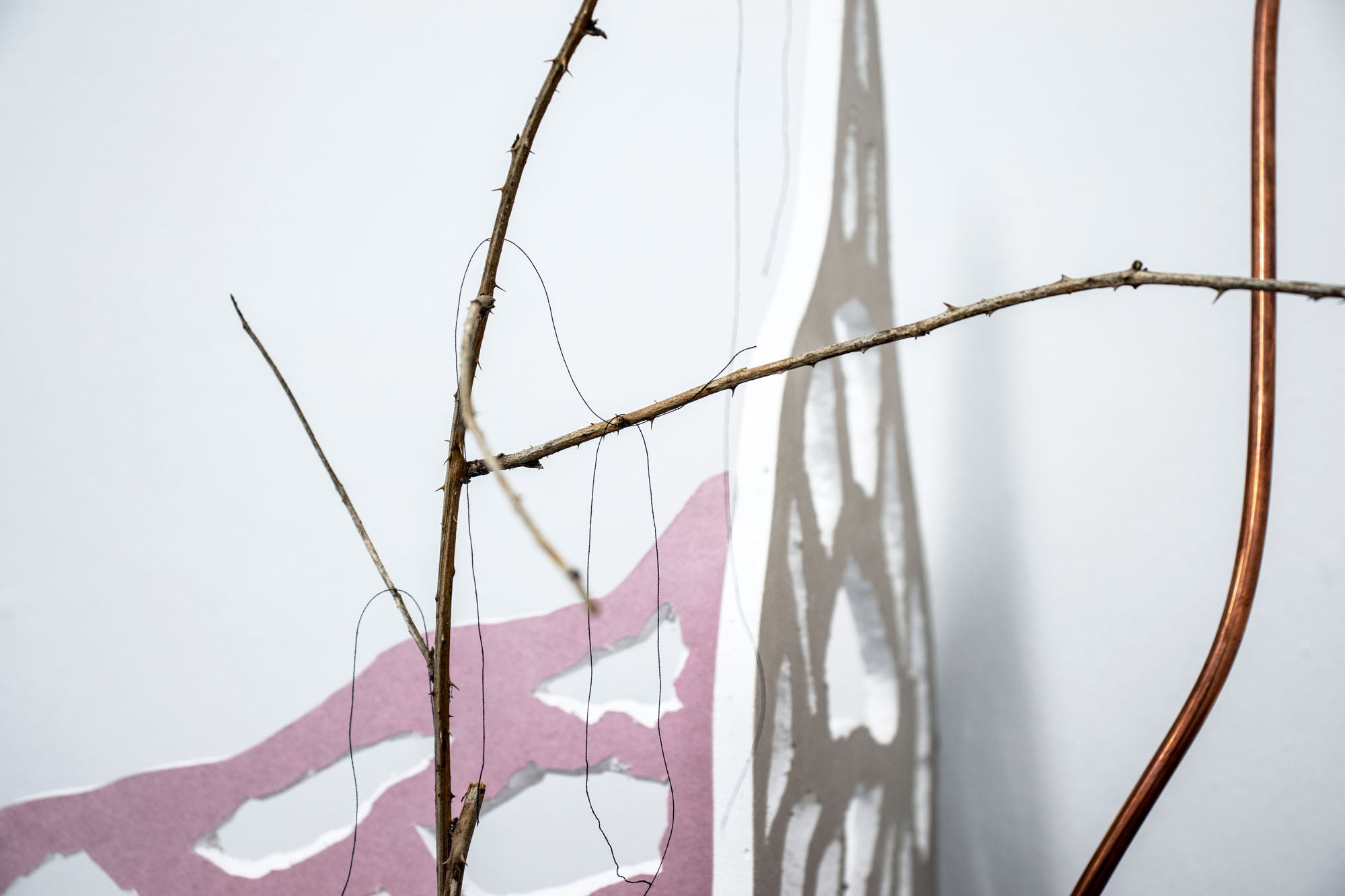
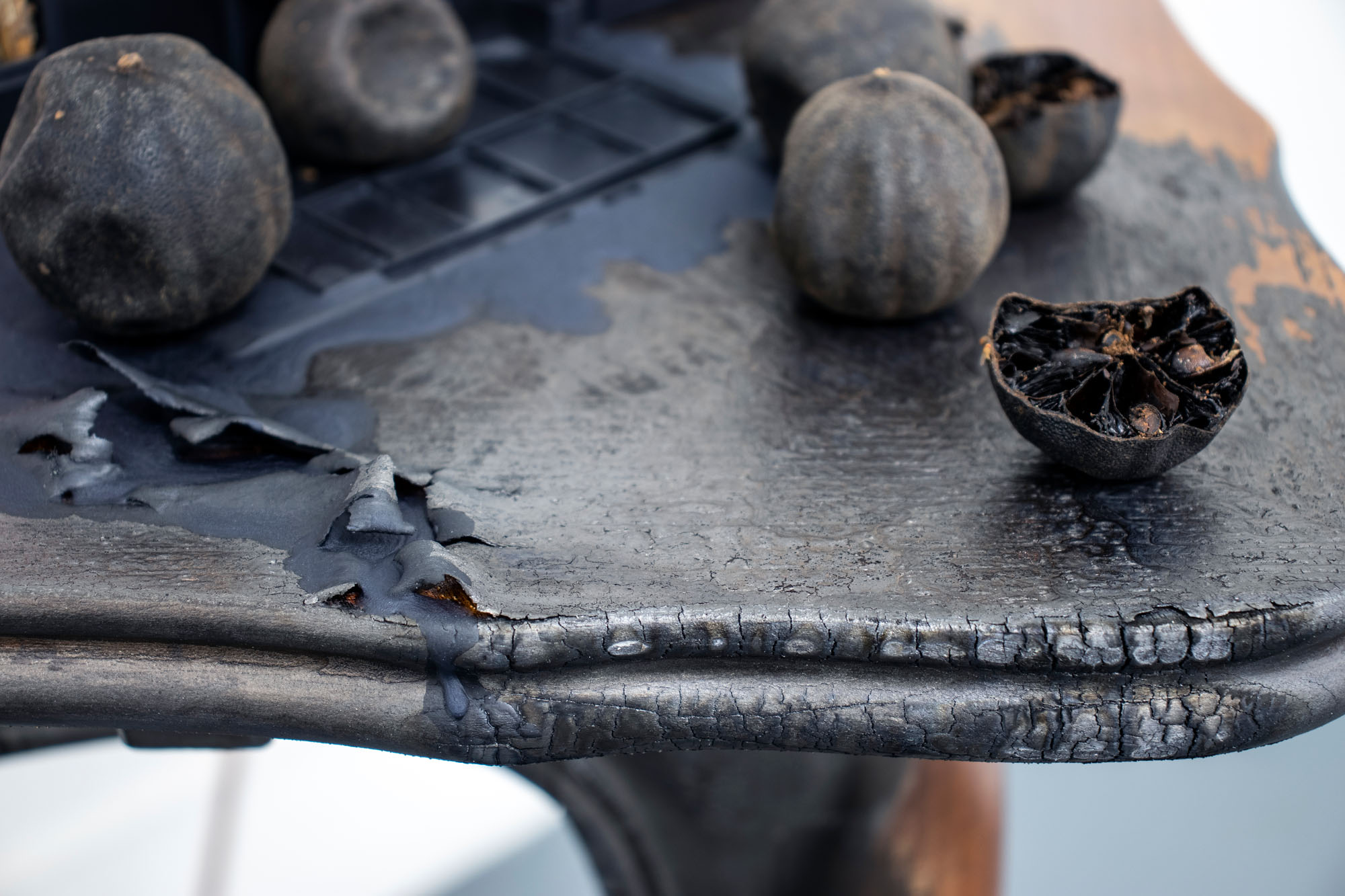
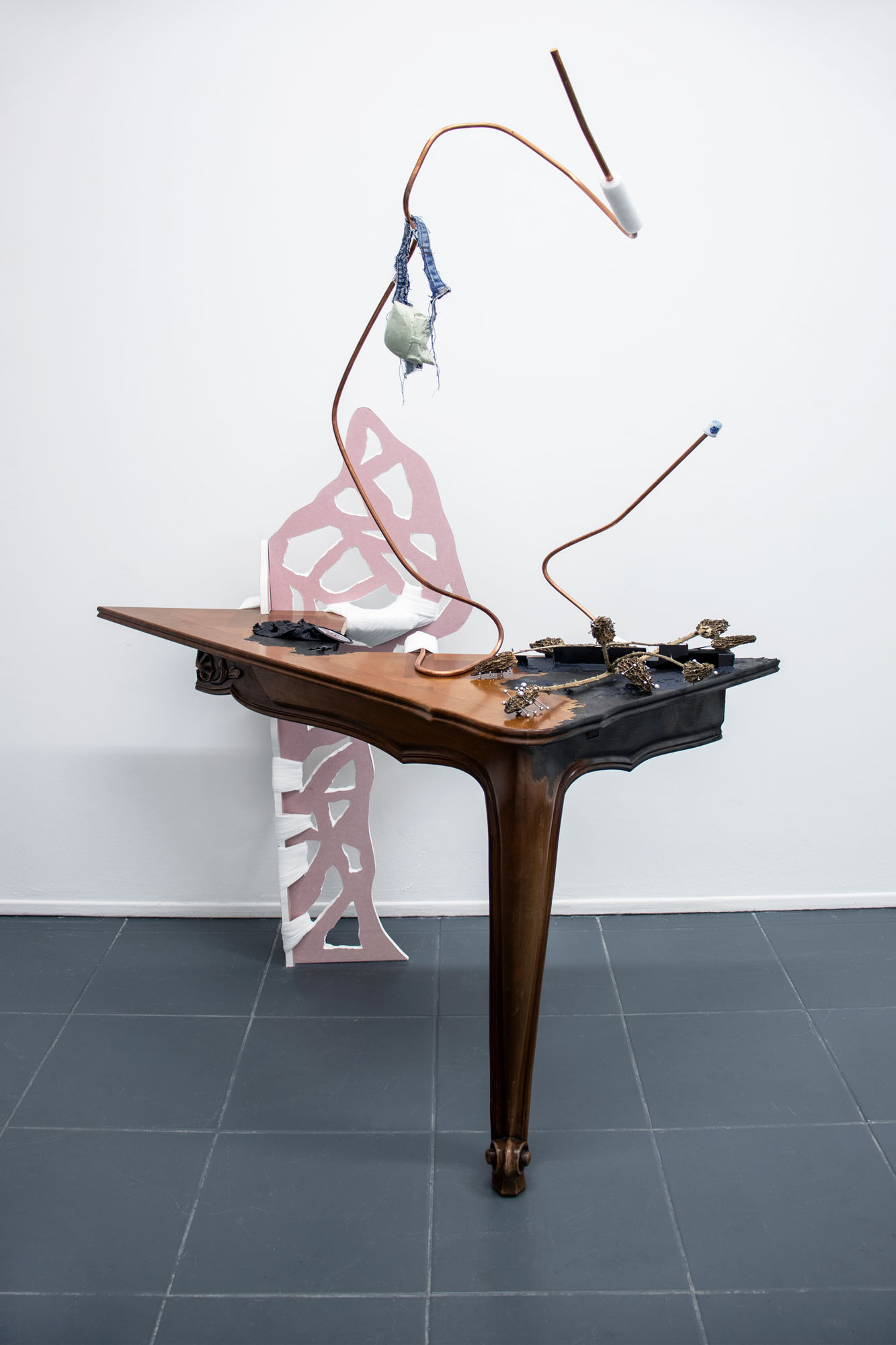
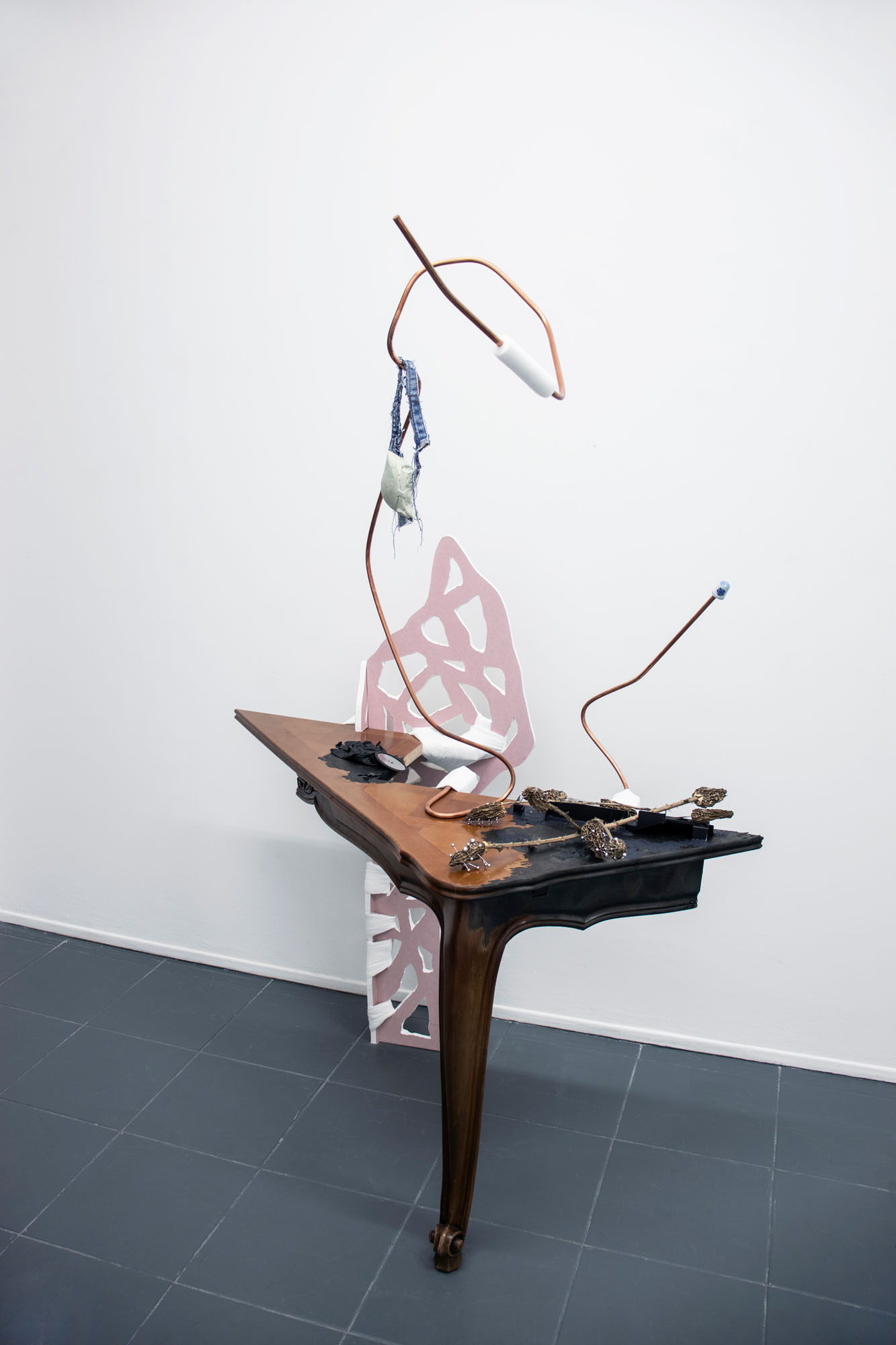
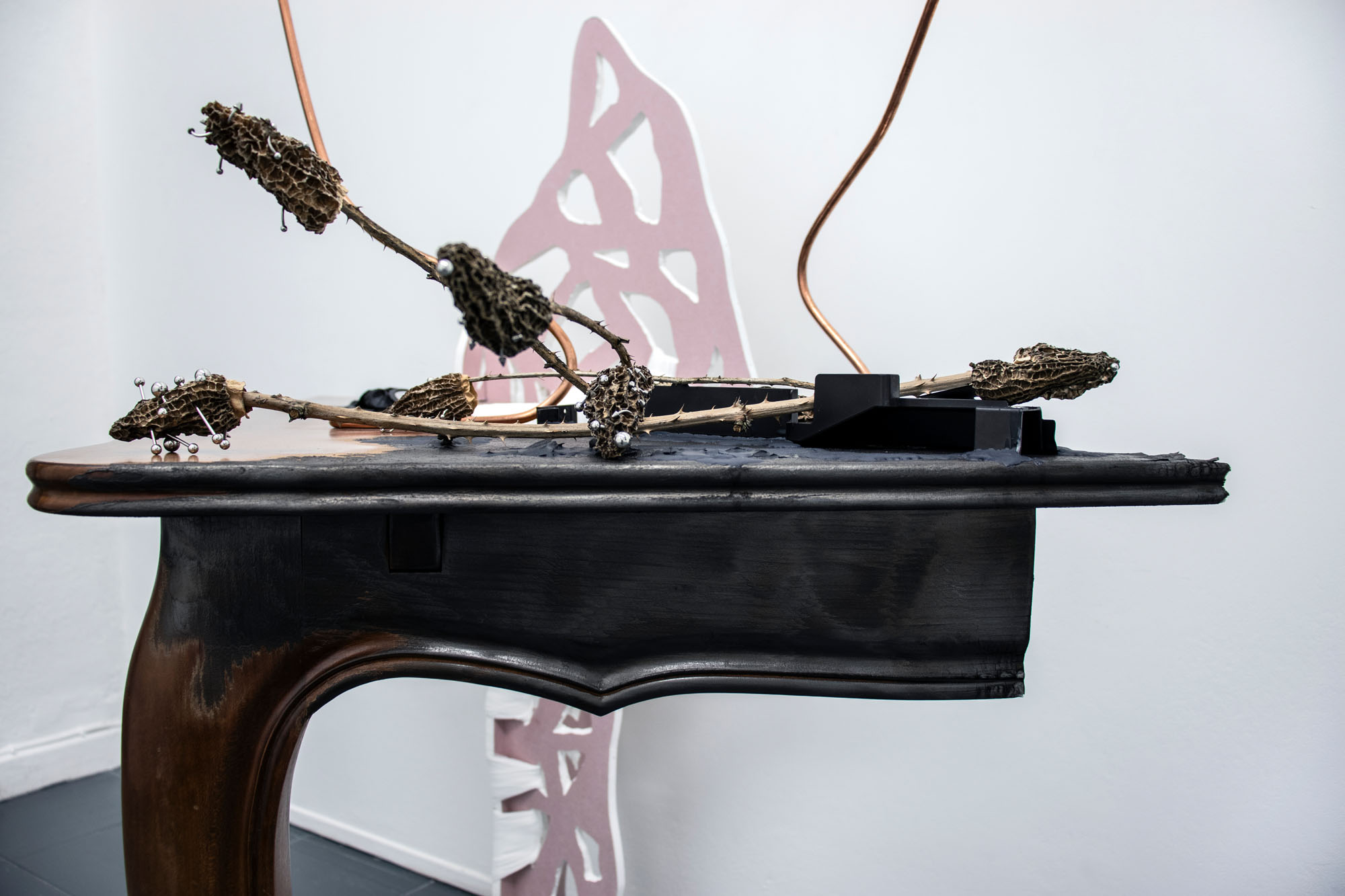
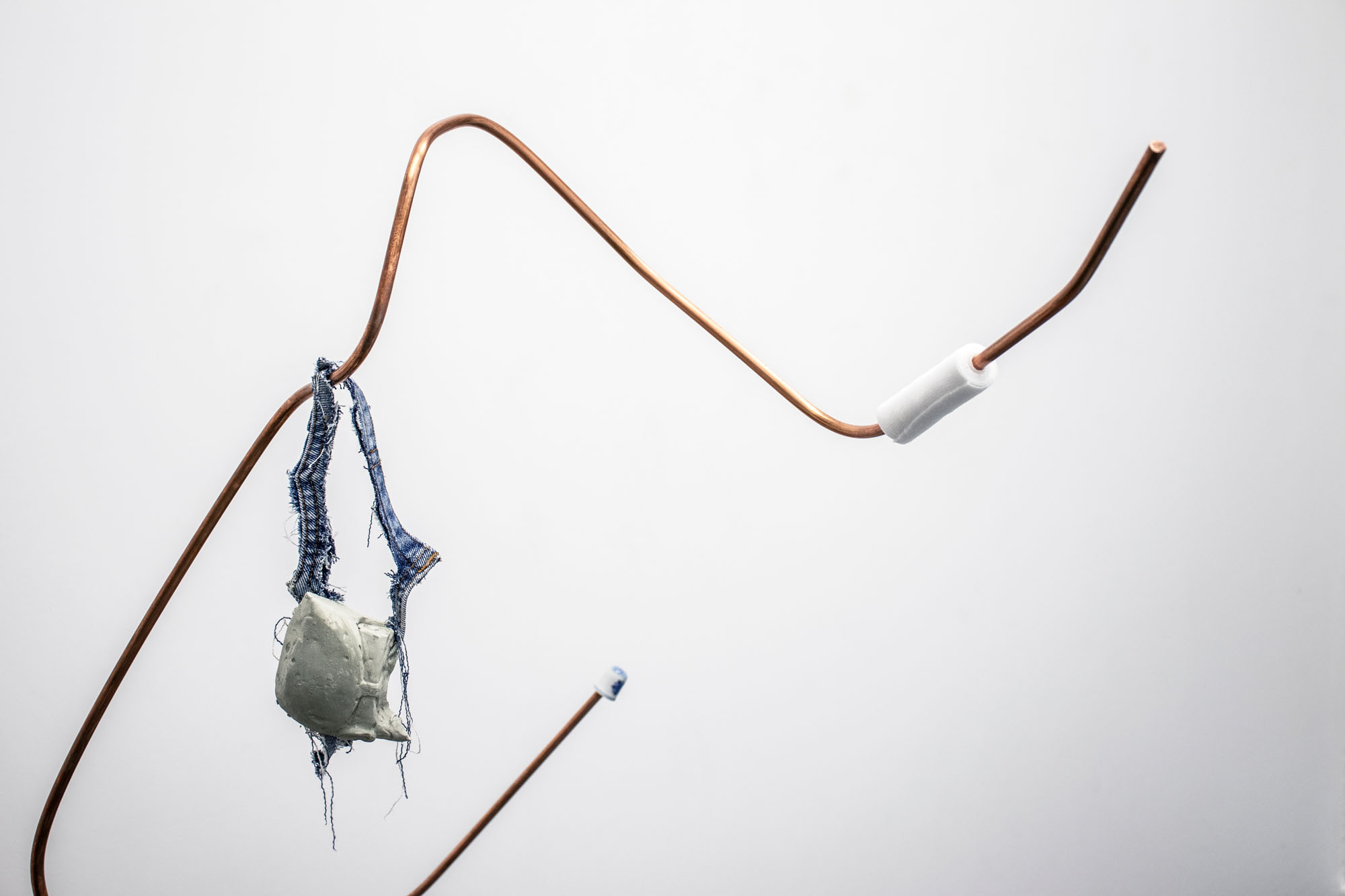
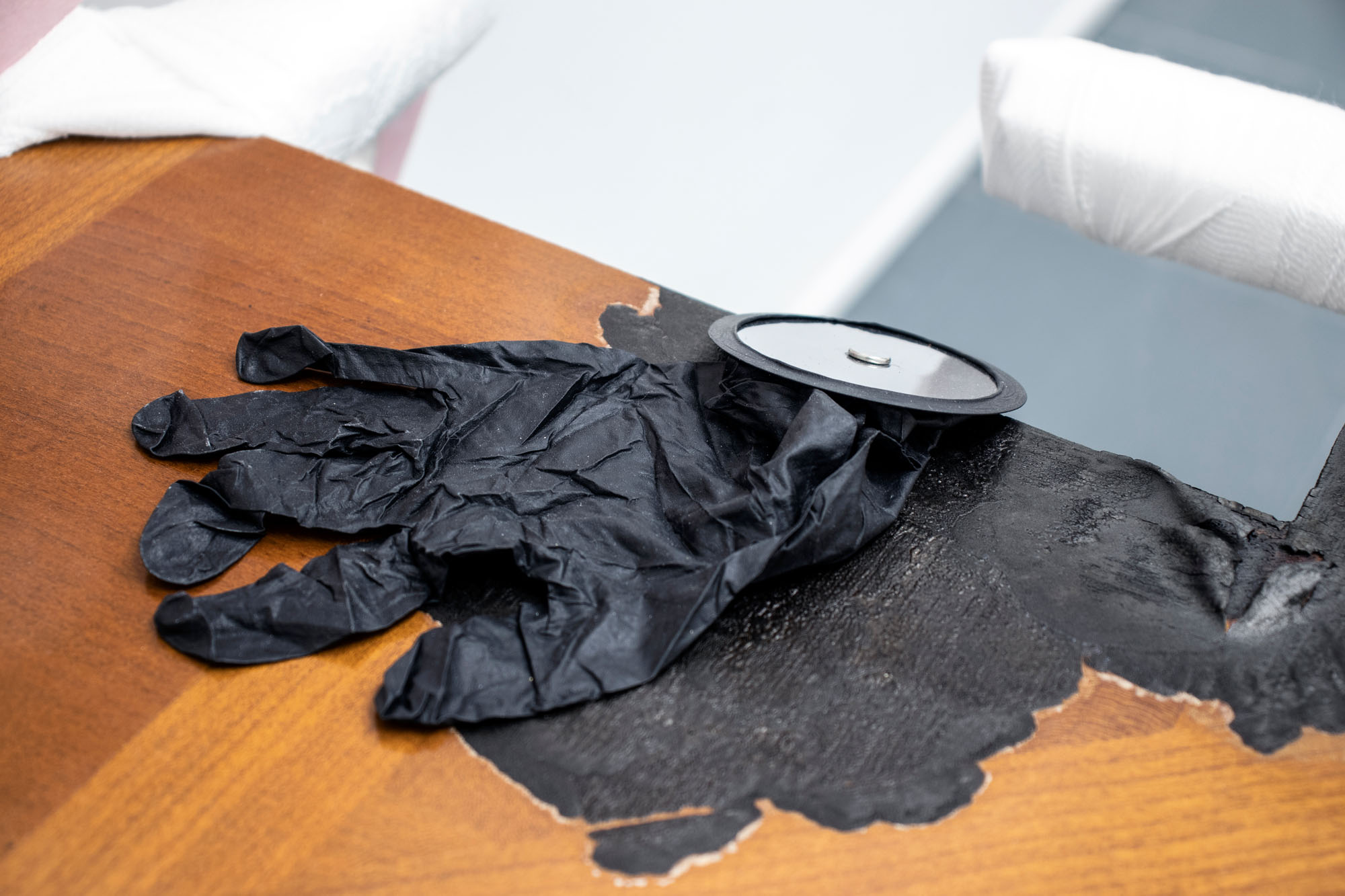
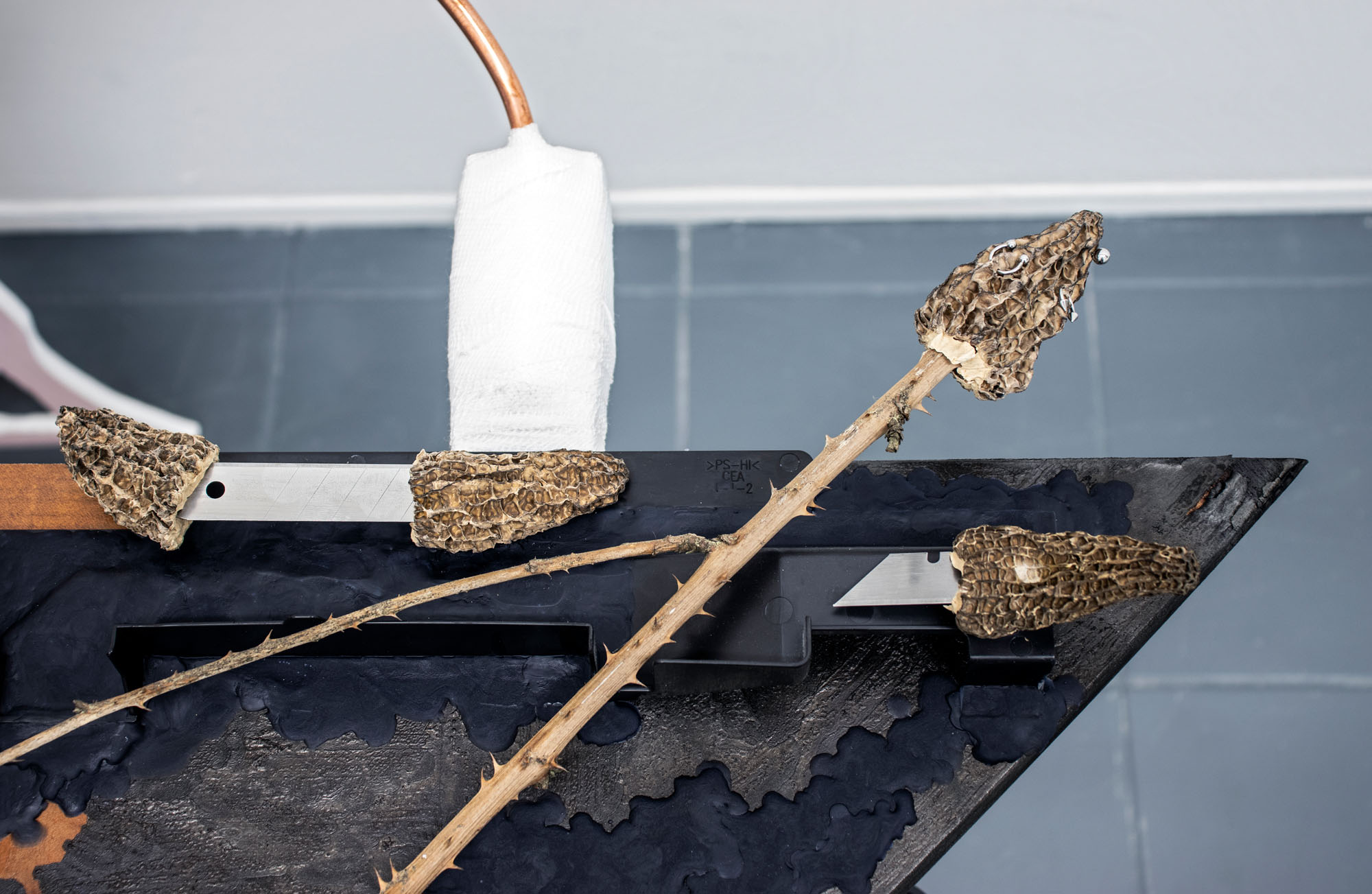
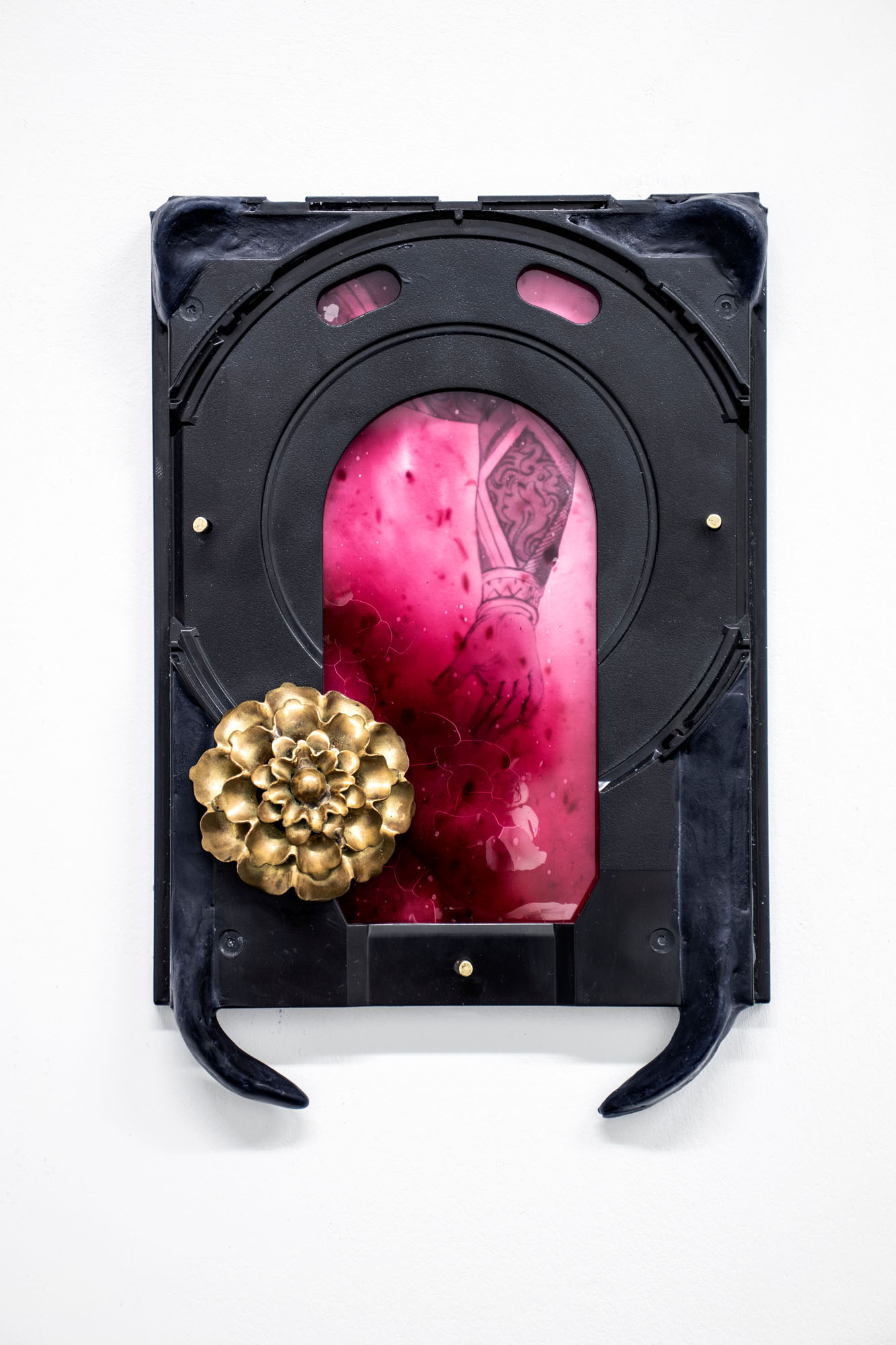
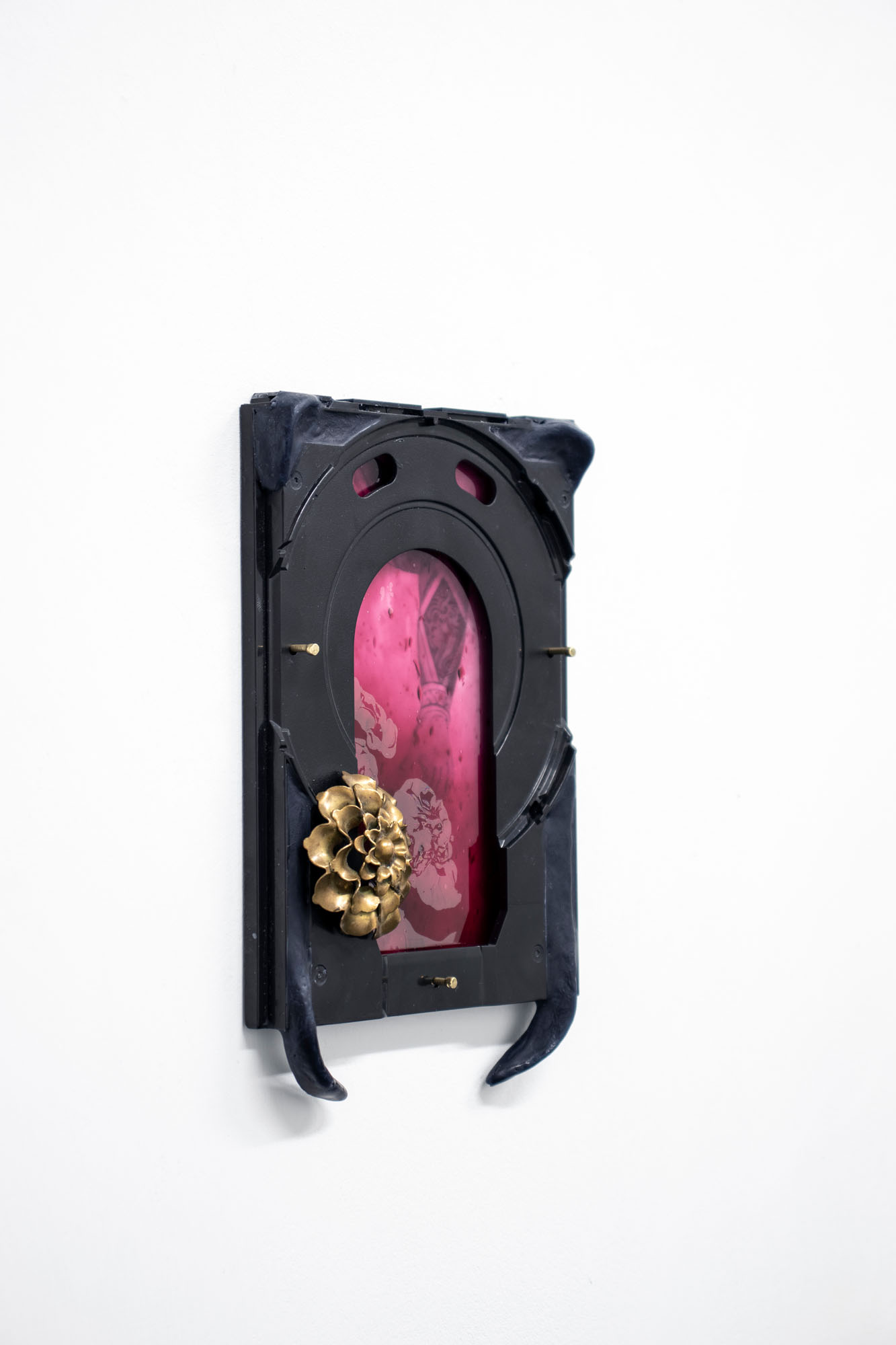
OFLUXO is proudly powered by WordPress
